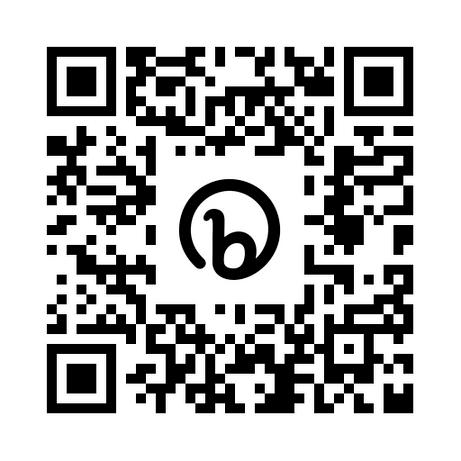APRIL 2024





O ering 60+ eateries, stores, and entertainment venues, Shop Penn has what you need to welcome the spring season in style.

Warmer weather is right around the corner, so now is the time to get out and enjoy everything the Shop Penn Retail District has to o er.

Brews Books + Blooms

Shop Local. Shop Penn. #SHOPPENN
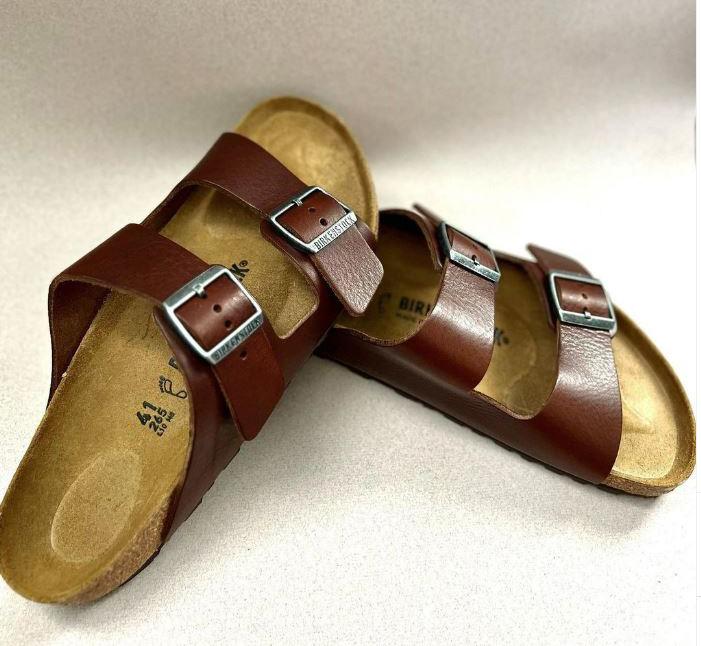
16
32
The Ressurection of Panchiko
The champions of the lost wave talk tour, streaming discourse, and their storied origins.
Who Am I, If Not a Violinist
I know I am not the art that I create, but I also wouldn't be who I am if it weren't for my art.

50
Drew Basile: From Philly to Fiji
This Penn grad earned an education in reality TV on Survivor's 45th season.
12
40
Forbidden Narratives
Little Free(dom) Library is circulating banned books by Black authors across Philadelphia in celebrtion of Black History Month.
Julia Pratt on Finding Belong Between Her Melodies
This Philadelphia native is making songs that she wants to listen to and we can't get enough.


10
44
The Penn Sweater in Bangkok
What happens when you donate clothing to thrift stores?
Diamonds Are a Debutante's Best Friend
You might wear jewelry, but probably not like this.
I n B loom

Penn's greatest weekend of performance artistry and debauchery: a Spring Fling retropspective photo essay
22 TheRevelries ofSpring
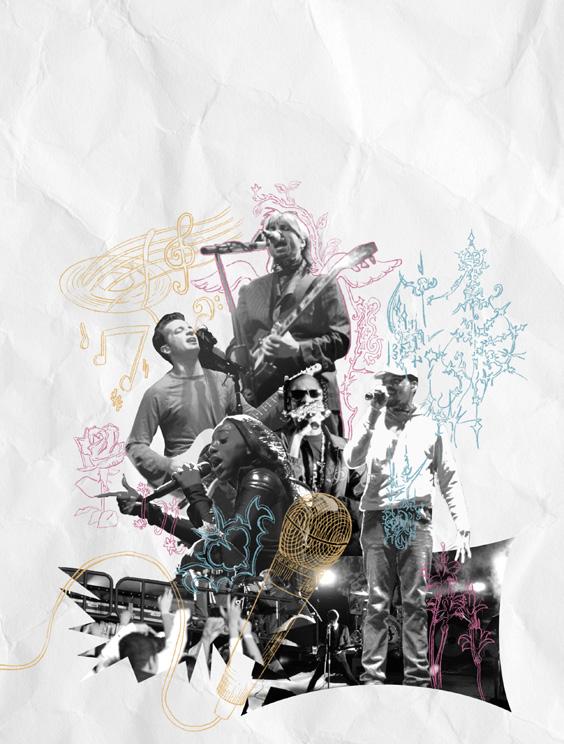
On the front cover, Street highlights the rich tapestry of performers that bring campus back to life every spring.
By Katrina ItonaMuses: Aï Momori, School of Rock, and SSX 3
Last month I started logging my days through sketches in lieu of my typical sporadically written journal entries. I would say that I’m no Picasso but perhaps Picasso’s style might best describe the disjointed chaos of my drawings—I digress.
Putting pen to paper has often been a necessary catharsis in the uncertainty of life as long as I can remember. Whether I was penning fictional stories of the horror variety or chronicling my middle school malaise, I found a world of imagination between blank pages. Nowadays, my journal steadily fills with half–baked haikus, philosophical ponderings, and observational sketches.
My sketches of pigeons flocking to the San Francisco Ferry Building on a balmy Saturday morning or the haiku that accompanies it will never see the light of day, or so I hope. But isn’t that one of the wonders of making something—the process itself?
Undoubtedly, I love external praise and admiration as much as the next person, but even more I love the internal praise I bestow upon myself after I finish a drawing or a particularly satisfying piece of writing. Creation for oneself is perhaps one of the most intimate acts we can perform in a world that so quickly commodifies the production and consumption of art.
The standards by which we measure the value of art are often characterized by the end product. A consumer or observer’s opinion ultimately informs the price tag we pay for the books we read, the art we hang in our homes, and the music we listen to. What makes any one song or story more fiscally valuable than the next? Perhaps the most priceless commodity is the indescribable feeling you get when your pen dashes across a page or your bow dances across your violin. This month Street explores the archetype
of “the artist”, asking: Why do we create and what does it mean to consume the art of others? From our Spring Fling Concert retrospective photo essay to interviews with our favorite new musicians and subtle, nuanced performances on the silver screen, Street chronicles these stories in this April’s issue: Artistry in Bloom.
In the process of putting this issue together I've philosophized that to be an artist is so much more than the final product you make. The stories we write, the paintings we make, and the songs we sing, are a culmination of our experiences and influences. Either a window into an imagined world or a mirror of their own life—the art we make is forever marked with our fingerprints. For Street, our endless nights spent in the Pink Palace at 4015 Walnut St. culminate in this beautiful, glossy magazine in your hands that reflects every artist and writer who calls this publication home and is the window into our mind's eye.


Lingenfelter, Luiza Louback, Dianna Trujillo Magdalena, Yeeun Yoo
Audience Engagement Associates
Annie Bingle, Ivanna Dudych, Yamila Frej, Lauren Pantzer, Felicitas Tananibe, Liv Yun
LAND ACKNOWLEDGEMENT
The Land on which the office of The Daily Pennsylvanian stands is a part of the homeland and territory of the Lenni-Lenape people. We affirm Indigenous sovereignty and will work to hold the DP and the University of Pennsylvania more accountable to the needs of Indigenous people.
“I can’t believe we never met at Penn”BY WALDEN GREEN Illustration by Emmi Wu
Do you believe in true love? Do you know what you mean by that? I’ve come to believe that hopeless romantics actually fall into two camps: circumstantialists and anti-circumstantialists. For a circumstantialist, a big enough obstacle is a sign that something is not meant to be. Meanwhile, an anti-circumstantialist is the “love will prevail” type, the one who believes there is no “wrong time” for the right person.
Before spring break, I fell firmly in the latter camp. Now, I’m not so sure.
If you follow me on the app formerly known as Twitter, you probably saw me “posting through it.” On March 10th at 3:36 p.m. PST, I wrote “love is a triumph of attraction over circumstance.” Then, a follow-up: “all my homies hate circumstance.” I had texted a man—we’ll call him Blake— asking if he wanted to see each other one last time before I finally left the West Coast for good. My flight was scheduled for 7:30 a.m. the next morning. Blake didn’t text me back that day. He still hasn’t.
We met for the first time on a Friday night. I was in [REDACTED CITY] visiting friends, one of whom worked with him at [REDACTED TECH COMPANY]. My first impressions: really cute smile, taller than I expected, has those sort of Cro–Magnon features that I tend to go for. There was chest

hair poking out of the top of his shirt, which was a gay shirt (corduroy and colorblocked) but wasn’t as gay as mine (purple and black vertical stripes, nautical collar).
Blake graduated from Penn last year, but we never officially met. The plan was to go out clubbing with some other people from his department and, at first, I did a good job of dividing my conversation equally between everyone. But once we were in line, the drinks started hitting and I only wanted to pay attention to Blake. I don’t remember how long we waited or exactly what we talked about—antitrust laws, I think—but I remember the feeling of his stubble against
my cheek as he leaned into my face, closer than he needed to.
We drank more, danced in a circle, and once enough hormones and alcohol had built up in my bloodstream, I worked up the courage to ask him for a kiss. “I’m in front of my coworkers,” he astutely reminded me, “but I’m not opposed to it.”
That same Friday, Ariana Grande released her seventh album, Eternal Sunshine The title comes from the 2004 Jim Carrey / Michel Gondry movie Eternal Sunshine of the Spotless Mind, about two lovers who erase their memories of each other but really about Kate Winslet and her Agent Orange
hair. It’s an anti–circumstantialist bible, built on the conceit that not even targeted amnesia can stop these people from finding each other again.
But the whole weekend had me thinking about another movie: Richard Linklater’s Before Sunrise. Ethan Hawke and Julie Delpy meet in Vienna for twenty–four hours, maybe fall in love, maybe fuck, and then they leave. Ignoring the sequels, it’s the circumstantialist to Eternal Sunshine’s anti–circumstantialist; Julie and Ethan could be perfect for each other now, but what if it’s only for now?
We had dinner plans the next night at an Italian restaurant: me, my friends, Blake, and his roommate. Then, we switched locations to a wine bar that did $15 pour–overs. Blake and I sat across from each other, and the whole time I couldn’t focus on anything except how close our fingers were resting on the table. I wrote a message in my Notes app:
“Need to sit on my hands lest I reach out and try to entwine my hands with [Blake]’s hands.”
An hour later, and we were on his couch— me sitting like Jacob Elordi in that one photo, him talking about his Penn situationships. At a certain point my friends left. I asked him if I should leave. He told me I didn’t have to right away. Then we were standing around Blake’s kitchen table, unpacking our family traumas when—disaster! The cheese sauce and rosé in his guts turned against him, but before I left he insisted I take his number and text when I got home.
I did, and then we kept texting.
Him: “You are lovely company :)”
Me: “I do try”
“And I promise I’m not always such an oversharer”
Him: “I was quite fascinated by your stories”
“Definitely did not bore me once”
Him: “I can’t believe we never met at Penn!”
*Insert Cardi B “Should I kill myself?” tweet*
I was listening to Eternal Sunshine. To coincide with the release of the album, Ariana shared a Gondry–inspired video for “we can’t be friends (wait for your love).” The song immediately drew comparisons to Robyn’s “Dancing On My Own,” mostly on social media but also in places like Pitchfork.
Except there’s a crucial difference. “Dancing On My Own” is Robyn triumphant in spite of; she’ll keep dancing with herself until the right person comes around. Her voice has that typically Northern European resilience (see also: Björk’s “I thought I could organize freedom / How Scandinavian of me!”)
Ariana, though, is totally capitulant. She’ll wait for your love, and she sounds like it. Breathy, ecstatic, overcome. “I don't wanna tiptoe, but I don't wanna hide / But I don't wanna feed this monstrous fire / Just wanna let this story die / And I’ll be alright.” Like Ari, the waiting doesn’t scare me, but waiting ad infinitum does.
Maybe I misread the signs. Maybe it’s Blake’s M.O. to say these things when he’s drunk and regret them the morning after. I could’ve interpreted his messages one way (let’s make the most of the time we have), when it could’ve been interpreted another, slightly different way (if only we had more time…). If this is a sign from the universe, then I’m either an anti–circumstantialist in search of someone else who’ll say “fuck it,” or it’s time to join the other team.
One more possibility though: What if I was right? What if he’s reading this right now, waiting for my forgiveness, or for me to say this door isn’t totally closed? If you are, here’s what I can say:
I’ll wait, too. But not forever. k
34th Street Magazine, Marks Family Writing Center
In a corner of Abyssinia, bathed in dim yellow lighting, I sit across from Walden Green (C ‘24), and stare down an oversized rainbow–hued palette of Ethiopian food. Amidst the buzz of our fellow restaurant goers, Walden types furiously on his laptop, tweeting about Italian Disco Stories.
"I'm sorry, I have to self–promo my article right now," Walden quips.
Walden is a Rolodex of every significant cultural event of the last two decades and a master of comedic riffs; to know him is to be captivated and fascinated. Despite being a Twitter (which he refuses to call “X”) aficionado and carrying the cultural influences of a 2000s baby, Walden Green is utterly singular. There are no comparable forces of personality, self–assurance, or individuality within a ten–mile radius of Penn’s campus.
“I’m a bit of an acquired taste. You either love me or you don't want to get anywhere near me, but I think that the people [who] are with me are loyal to me to the core, and I am loyal to them to the core,” he proclaims. Granted, this was his response to the question: “what kind of milk would you be”, to which he responded, “Goat milk.” But the sentiment remains applicable. Walden is steadfast in his devotion—whether to his friendships or his former role as editor–in–chief, EIC, of Street. Every act he performs is a passionate manifestation of the wellspring of creativity upon which his identity is sustained.
So when Walden abruptly sets his phone face down, done composing his Tweet it seems, a quiet mischief colors his gaze.
Over the next two hours, we tumble down a rabbit hole, documenting our recollections of Walden’s tenure as EIC.
You’ve mentioned that editing your writers’ work was one of your favorite parts of Street

Meet Street's former editor–in–chief: patron saint of Street print production, goat milk afcionado, and Twitter ethnographer for the ages
BY NATALIA CASTILLOand working in journalism. What about the craft of editing and composition enthralls you the most?
I think editing is the perfect balance of selfishness and selflessness. When I’m working with another piece of writing, half of my brain is focused on what this person [is] doing really well— there might be a turn of phrase, a way of framing an idea, or a sort of particularly compelling sentence structure [...]. But then the other half loves seeing a finished piece published, and even if nobody else knows where my fingerprints are on it, I know. But then, I think it’s also the idea [that] it’s a very noble line of work, because you’re helping amplify other people’s voices, right? The heart of editing—and this is something that I’ve had to learn over time—is not imposing what you want the writer to be saying or the argument you want them to be making. It’s about figuring out exactly what they’re trying to get at, and helping them to say it in the way that’s going to reach, and hopefully meaningfully impact, the greatest number of people.”
À la Dua Lipa's “New Rules,” what are your three maxims of life while being young, hot, and on the rise?
Rule number one: practice radical openness. This goes for anyone who dates men specifically, but I think is pretty universally applicable. Never assume that a man implicitly understands something that has not been stated explicitly.
Rule number two: Learn how to be delighted by things. If you’re sitting on an airplane, and there’s a baby in your row and you do not play peekaboo with the baby, you are not the kind of person that I want to spend time with.
Rule number three: As @glamdemon2004 famously said: “Spell Pharaoh. Tell me what the FTC does. Name one hobby you have outside of media consumption.”
During your 34th Street career, you were famously promoted every semester. Other than editor–in–chief, what do you find was your most pivotal position?
Yes, I was Music Beat, Summer Culture Editor, Arts Editor, Culture Managing Editor, Print Managing Editor, and editor–in–chief. For the most pivotal [position], there are two answers, right? The first one, and this is a bit of a cop–out,
is my first position—I would not be sitting here at this table across from you right now had I not made the fateful decision to take over for my high school best friend Liwa Sun [as a music beat] midway through the semester. That’s [when] I fell in love with Street. That’s where I first learned what it meant to be an editor. I mean, I could not have picked a better person than Kyle Whiting to be that first person for me.
But it feels like there’s only one right answer here. And it’s [inaugural] Print Managing Editor. I was the first one [that] not only got to shape that position into what it was, but because of it, I got to shape the new version of 34th Street into what it is [now]. Of course, so much of that was the clarity of vision and planning that Emily [White, Walden’s predecessor as Street editor–in–chief] brought to the table, but I was honored just to be along for the ride. I can still see my fingerprints all over [the print magazine] and I hope to be able to for a long time, or I will become a meddling alum and send very strongly worded emails.
You notably came up under Emily’s wing, and you were the first editor–in–chief to produce
glossy mag for a full academic year. What were some of the early challenges, especially going print–centric in a digital age?
With regard to going print–centric in a digital age, I would say the main battle was trying to convince the alums that there was a reason why we actually needed to be doing this. They’ve been pushing for a digital–first approach for The [Daily Pennsylvanian] for a long time now, and to actually say, ‘Hey, let's invest more money in print’ was sort of an interesting proposition. So Emily had to convince the alums that it was going to be valuable to the students and valuable to the brand; but most importantly, that it was just going to be valuable. We needed to convince them that it was going to make money—and it does! 34th Street now pays for its own printing for the entire year.
When I became Print Managing Editor, I had to invent the workflow, and that’s a lot of pressure because you're balancing so many different things that need to get done in a timely manner, but also you can’t ask too much of the people that are working under you. And you want things to be of the highest quality possible, but also, at a certain point you have to be okay with good

enough. I think it really taught me how not to be a perfectionist.
You notoriously do not have social media besides X (formerly known as Twitter). How you keep your ear to the ground as a culture connoisseur without other social media, and why is X the best social media platform?
Great question. Things reach Twitter first. I would say that the two most prolific breeding grounds of culture right now are Twitter and TikTok. But TikTok may not be with us for much longer. And also, I know that if I was on TikTok, I wouldn't do anything else; I would just be on there all day. In a weird way, I love Twitter more now than I did before Elon Musk bought it out because it feels like two versions of it exist side by side.
Representing the duality of America’s current state?
Right; it’s like dialectics because you have the evil empire of blue—to use a metaphor from a film franchise that I don't even like that much. You have the evil empire of blue checks, right? And their sort–of emperor, Elon Musk. But then you have this system that runs parallel that is keeping the more fun, cultured, chaotic side of Twitter alive. And there are a lot of writers in that ecosystem. A lot of writers, a lot of artists, a lot of people who are doing interesting things in the media industry, and we really just haven’t been presented with a viable alternative yet. We tried Mastodon, we tried Bluesky for a second, but like neither of those have the built–up user bases. So yeah, I love Twitter. Follow me @waldenmgreen. But yeah, in the cultural pipeline, it’s TikTok and Twitter are at the top, then Instagram, and Facebook is last.
If you could encapsulate your tenure as Street EIC in one “word of the issue,” what would it be?
It has to be “Stramily” [aka “Street Family”]. Which I know is so dumb. But I'll tell you why. I think the one thing that was lost in COVID–19—I mean many things were lost—but for Street especially, was a sense of community and [a loss of] people who are not just a part of Street, but [embody] Street in their whole Penn lives. That was something that I brought into my tenure
with the real expressed intent of "building back "build back better"[so to speak]. And I mean [...] I think I succeeded.
Who and what at Street left the most indelible mark? Metaphorical or literal …
Beatrice Forman. Literally a twink despite being a straight woman and the person [who] I modeled myself after. I wanted to be her when I grew up. And Emily White, who theoretically could have ended up being my rival, but instead became my friend and part of the dynamic duo that made glossy magazine. And of course Arielle, the Strommy to my Straddy, love of my life. I would literally marry her.
In a lot of ways, even though you’re a solid ten months younger than me, you’ve always felt like a father figure at Street. What advice do you have for the new generation of staffers? For the writers: No pitch is too dumb. The worst thing that [your editor] can say is, ‘Come back to me with another one.’ And if it's something that you're passionate about and interested in, and that you’re preoccupied with [...] that's what makes the best articles. For editors: Make
your section feel like a little family. Get excited about the topics that your writers are going to be covering, because the best thing that you can be for them is like an expert. For Strexec: Be each other’s support system, devote time to hanging out and talking about things that are not related to Street; be each other’s biggest cheerleaders. It’s about unconditional support, I think, at the end of the day.
One day, when people point to the cutout pictures of your face on the walls of the Stroffice, what would you want them to remember you for?
Wow. That's a great question. I think if you had asked me that a year ago, I would have said glossy mag. However, I think that’s Emily’s achievement to claim before mine. And in a weird way, I think that the sense of community and family that I’ve worked to cultivate feels to me like an even more monumental achievement. So I want them to remember me as the Strodfather, right; like, I want them to look at the cutouts of my face in the Stroffice and be like, “Wow, he must have been really beloved.”
*Miranda Priestly voice*: That’s all. k
Last tweet you liked:
@VolcelFry: Guys I just got the call. They’re saying it’s going to be the most Lights by Ellie Goulding summer ever
To hark back to the early days of your Street career as a Music Beat, what is your current hot music take?
I think the new Ariana Grande album was her best one.
Fuck, Marry, Kill Penn landmarks: The Button, The Tampons, The Compass. Marry The Tampons, obviously. Fuck The Button. Kill The Compass; you know the real history behind the “walk around the compass”, right?
If someone were to make a biopic of your college years, who would play you? Joseph Gordon Levitt. Or Alex Consani.
There are two kinds of people at Penn: Drunk friends and sober friends.
And you are?
The sober friend you want to get drunk with.

Under Bangkok’s scorching sun, the thick air blanketed the disordered piles of unwanted clothes. As I dug through Chatuchak Market’s endless textiles, I scooped up a stained Polo Ralph Lauren shirt of questionable authenticity, merch from an unheard–of university in the Midwest, and a pair of cargos nice enough to try on. In one of the largest thrift markets in Bangkok, a blend of Pinterest–worthy vintage stylers and local moms fitting their kids unite in their search for cheap clothes.
As I wandered to the next stall, the “premium” racks of jackets caught my eye, boasting their hanger–ed status amid the endless piles of loose fabric. At its very front was the one. A red and blue jacket with four big letters on the chest: “PENN.” All the way from Walnut Street, a jacket made it across the globe to a weekend market in Thailand. While its terrible condition invalidated the $30 price tag,
the question remained: Why is this here?
The journey of this jacket started at a local thrift store. A Penn grad or a salty Penn reject donates the jacket, and it is sadly left without demand. With nearly 150,000 pounds of clothing donated to just Goodwill per day, it's virtually impossible for a store to clear its inventory. After a while, the leftover stock is transported to one of 142 outlet stores across the country, where clothes are sold by weight from $.49 to $1.29 per pound.
Whatever isn’t sold in outlets is then sold for pennies to businesses such as Used Clothing Exports, the largest exporter of used clothing in the world. The company employs hundreds of mostly immigrant workers as graders, sorting clothes into bales of four different grades. Adam Minter, in his book Secondhand: Travels in the New Global Garage Sale, explains that the workers at this warehouse process over 200,000 pounds of clothing
each week. The clothes that make it out are then shipped once more to various countries across the world, with a near–even distribution between Sub-Saharan Africa, Southeast Asia, and Eastern Europe.
Upon docking at their destination, the bales are further sorted by local preference, filtering trash from fashion. As containers are unloaded, what used to be a donation from a family in Nebraska now becomes a product, a commodity just like any other. As Minter further explains, there is a clear distinction between sorting done in the United States and other countries. While a Goodwill in Philadelphia may grade based on the item’s logo, skilled sorters in, say, Thailand don’t need a tag to know its quality. A quick hand–feel sends low quality garments straight to the cheap pile, where someone might buy them at the lowest price.
Depending on their given grades, these

clothes are then shipped locally to vintage boutiques, thrift stores, open–air markets, and the landfill. While the Penn varsity jacket may have landed on the upper end of the market, other items in these open markets sell shirts for as little as 20 to 30 U.S. cents.
How does this happen? With countless businesses across the world contributing to the jacket’s journey, the global thrift trade is not one of charity. It's the fact that, even as the varsity jacket with damage and numerous holes treks the world, every step adds just enough value to make the whole process worthwhile (and profitable). The industry has perfected labor, shipping, and sales to the point where this convoluted system has proven its success.
Even so, this global process is not without its issues. Critics argue there is a correlation between high rates of used clothing imports and declines in domestic textile
production, with prominent examples seen in Nigeria and Kenya. With used clothes flooding the market at incredibly low prices, little motivates consumers to buy new, domestically produced textiles. This was demonstrated in Senegal in the 1980s and 1990s, when the liberalization of secondhand imports led to a complete collapse of the domestic knitted garments industry. In the years following, Oxfam estimates 3,500 job losses in industrial clothing production, directly harming the local economy. As a result, multiple countries, including Uganda, the Philippines, China, and India have imposed bans on used clothing imports, with the president of Uganda condemning used American clothing as as “clothes from the dead people.” Yet, overpowering economic forces continue to smuggle used clothing into these countries.
When someone out there in Thailand
decides to buy that Penn jacket, that is one jacket saved from the landfill, given a second life. But is this process really sustainable? 40% of "recycled" American clothing is unable to be sold and instead ends up in dumpsters worldwide. As countries become richer and richer, preferences for new, trendy clothing also rises. Take China for example, which throws away 26 million tons of clothing annually. As these preferences render thrifting obsolete, more clothing and instead ends up in dumpsters worldwide.
In many countries, the infrastructure required to dispose of massive amounts of textile waste is also absent, resulting in acres of clothes scattered through fields, deserts, and oceans. So perhaps the journey of the Penn varsity jacket isn’t one of sustainability and global cooperation, but rather reflects the United States' deflection of responsibility. k
Little Free(dom) Library is circulating banned books by Black authors across Philadelphia in celebration of Black History Month.
BY CHLOE NORMANWhether a die–hard Harry Potter fan or an unabashed Percy Jackson admirer, many students across the University of Pennsylvania’s campus can remember the excitement of picking up a new release of their favorite book series or staking out at Barnes & Noble to scour its new set of bestsellers. While not every student goes on to become an English or Comparative Literature major, the type of novels that students consume have a long–lasting impact on the development of their character and identity.
By immersing themselves in different cultures, time periods, and moral dilemmas presented in literature, individuals have a unique opportunity to gain greater insight into the diversity of human experiences, emotions, and perspectives that comprise the world around
them. Fighting to preserve the importance of diversity in literature, the Little Free(dom) Library initiative aims to promote the rich history of Black narratives and their literary legacies.
The past decade has seen an unprecedented rise in literary censorship within public education as more books continue to be challenged, denounced, or banned throughout certain communities and institutions. With PEN America reporting a 33% increase in the number of books banned in public K–12 schools, advocating for the freedom to read transcends from simply being a matter of intellectual liberty to becoming a critical defense in safeguarding the preservation of cultural voices and democratic ideals.
As the nation commences its celebration of Black History Month, Visit Philadelphia has

partnered with Little Free Library and the Free Library of Philadelphia to create the Little Free(dom) Library initiative. A nonprofit organization focused on promoting tourism across Philadelphia, Visit Philadelphia served as the project’s main organizer, attempting to highlight the city’s cultural diversity and historical legacies in the literary world.
“Expanding access to books is at the heart of everything that we do here at Little Free Library as a nonprofit organization,” Director of Communications for Little Free Libraries
Margaret Aldrich says. “There are more than 180,000 little free libraries around the world, and this network has shared over 400,000,000 books. We think that everyone deserves to see themselves in the pages of a book, and we also know that we can all learn from perspectives different from our own.”

Through the collaboration, Visit Philadelphia has created 13 miniature libraries throughout the city designed to give residents the opportunity to take home a banned book by a Black author or leave their own favorite book for others to enjoy. A small wooden box designed to house 10 to 15 books, each mini library appears as a miniature bookshelf where residents can borrow a book or leave a novel to share with the rest of the community.
Beyond residential communities, the mini libraries will be placed at popular landmarks across Philadelphia—the Betsy Ross House, Columbia North YMCA, Eastern State Penitentiary, Franklin Square, Historic Germantown, Kimmel Center for Performing Arts, and the Philadelphia Museum of Art—in order to broaden community engagement with the project.
Officially launched on Feb. 1, 2024, the project features 1,500 novels by Black authors that promote the rich tapestry of African American heritage and amplify Black voices that have been historically repressed in the literary world. The curated selection of literature includes classic works like Beloved by Toni Morrison as well as more modern titles, such as the acclaimed The 1619 Project: A New Origin Story by Nikole Hannah–Jones and All Boys Aren’t Blue by George M. Johnson.
“Something that we love about this project is that it celebrates the Black experience and Black authors, not only during Black History Month but throughout the year,” Aldrich says. “We believe that having diverse books available is important not only to the representative population but also to everyone being able to read those perspectives to help them grow
their understanding and inclusion and really make the world a kinder place.”
Expounding upon its mission to uplift marginalized members of the Black community, Visit Philadelphia ensured that the entire discography of novels included in its project was sourced from local Black–owned bookstores within the city. Through its work with Black and Nobel, Hakim’s Bookstore & Gift Shop, Harriet’s Bookshop, Uncle Bobbie’s Coffee & Books, and The Black Reserve Bookstore, the Little Free(dom) Library initiative encourages visitors to support local Black businesses and help strengthen minority entrepreneurship.
Highlighting the scope of Black talent beyond the literary realm, each Little Free(dom) Library is adorned with vibrant, dynamic artwork designed by local Black artist Alloyius Mcilwaine. A self–taught painter, Mcilwaine’s

work was intended to serve as a visual commemoration of the beauty embedded within the Black community and its culture.
The initiative marks the third installment of Visit Philadelphia’s broader local project, In Pursuit of a More Perfect Union, which aims to examine the city’s approach to commemorating national heritage holidays. Through its focus on bridging cultural barriers across the city, Visit Philadelphia’s project reimagines Philadelphia as a city rooted in inclusivity rather than discriminatory ideals.
“As the official destination marketing organization for the city, Visit Philadelphia works to honor the nation’s history, while also acknowledging that the Founding Fathers' vision of America does not reflect how many of our values have evolved,” the organization says in a public statement. “This series aims to bring Americans closer to realizing a more perfect union.”
The Little Free(dom) Library initiative sheds light on the national debates that continue to
persist over literary censorship in public education. While often considered an antiquated relic of the past, censorship has surged in recent years, increasingly targeting books that uplift diverse perspectives, challenge societal conventions, and amplify minority voices.
Professor of education at the Penn Graduate School of Education Jonathan Zimmerman supports the initiative's aim to preserve cultural diversity in literature by allowing students in public education the opportunity to connect with voices beyond their own lived experiences.
“If young people can’t be exposed to matters about race and sexuality, they’re not going to understand the way that those concepts work in our society,” Zimmerman says. “LGBTQ+ and African American individuals are part of America. It seems to me that if we decide as some states that we’re not going to include those perspectives, it isn’t just LGBTQ+ and African Americans that are going to be harmed but all of us because we need to learn about
the differences in our society.”
According to data retrieved from PEN America’s Index of School Book Bans, the 11 most banned books at the start of the 2022–2023 school year included Gender Queer: A Memoir by Maia Kobabe, The Handmaid’s Tale: The Graphic Novel by Margaret Atwood and Renee Nault, Sold by Patricia McCormick, and The Bluest Eye by Toni Morrison, all of which have been banned in more than ten schools across the nation.
The rising trend of literary censorship in public education not only undermines the principles of intellectual freedom and critical thinking but also perpetuates systemic inequality by marginalizing certain communities' voices. While the suppression of Black voices in literature can be traced back to the banning of slave narratives in the antebellum period, current efforts to erase Black authors' legacies from public discourse poses a renewed threat to the United States’ progression towards a more equitable society.
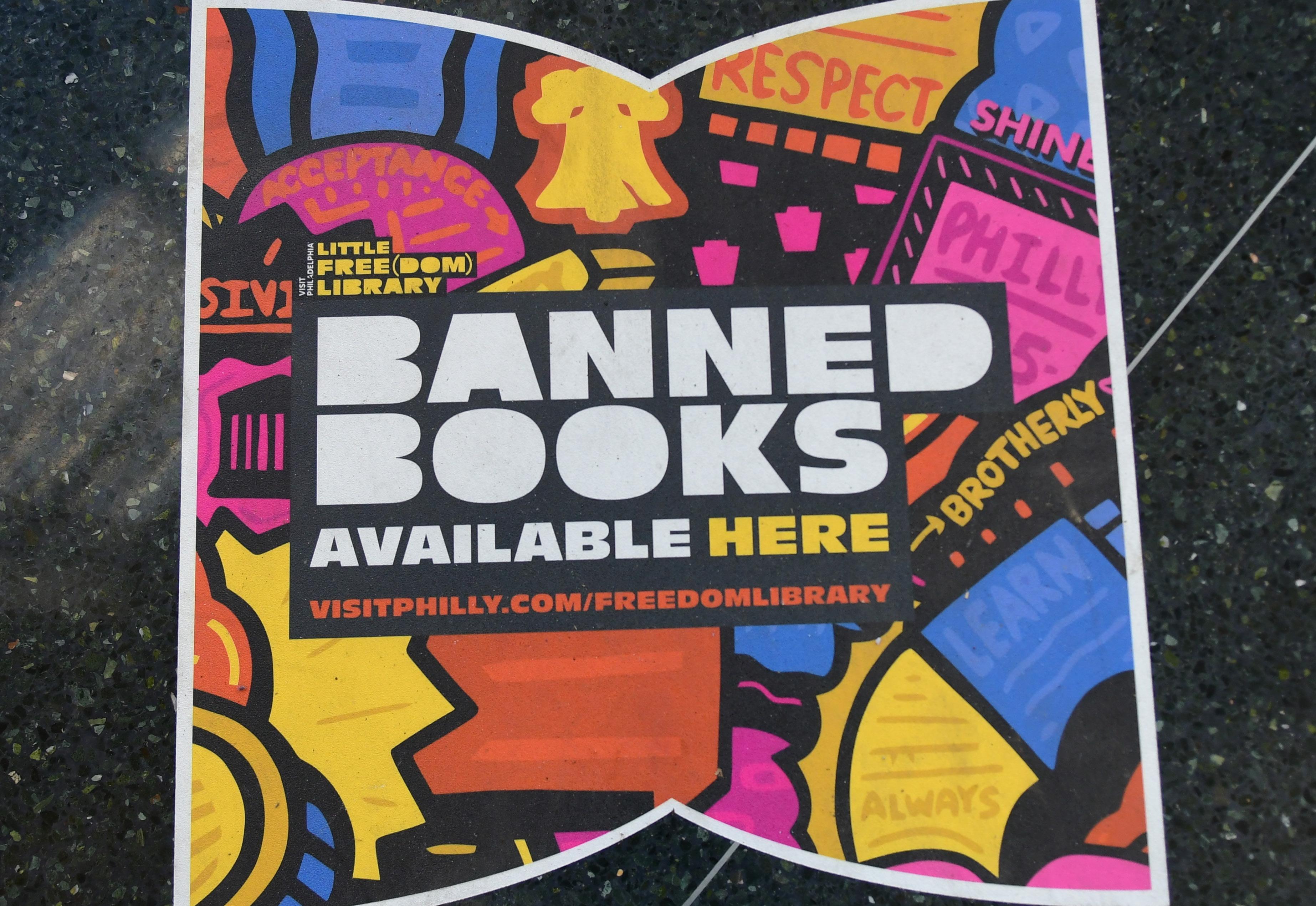
“In a democracy, to prepare citizens, you need to expose them to different points of view,” Zimmerman says. “And if all you’re doing is restricting what it is that they can read, you’re preventing their development as citizens. Nobody should be forced to read anything, but they should have the option of reading anything. And what troubles me is how these bans are going to restrict what our students can know and learn.”
On Penn's own campus, students can visit Penn Libraries’ Banned Books Collection organized by the Curator of Research Services at the Kislak Center, John Pollack, to learn more about the history underlying literary censorship in the United States and its tangential relevancy to the debates occurring in public libraries across the country today.
“[The current debate in public education] is a manifestation of this old battle between authorities and information,” Pollack says. “It is a debate of who gets to say what and what information you should have access to in the form
of books. The Catholic Church famously tried to control this in the early modern period by producing the Index of Banned Books which led to people arguing about how successful and effective it was. It's the same thing here.”
Fueled by ideological polarization, cultural suppression, and political antagonism, the censorship of books exploring themes of race, gender, and sexuality continues to restrict students’ access to novels that illuminate diverse perspectives and cultural experiences. By censoring literary works that challenge systemic oppression, educational institutions continue to violate students’ rights to intellectual freedom.
Confronted by mounting literary censorship, projects such as the Little Free(dom) Library initiative can help combat censorship wherever it arises by amplifying the voices of minority authors, expanding readers’ literary exposure, and illuminating suppressed community perspectives. Throughout Black History Month, students can visit a Little
Free(dom) Library in Philadelphia to ensure that the stories of Black authors are celebrated rather than silenced, and that the literature of the future continues to reflect the diverse experiences found across the city’s cultural communities. k
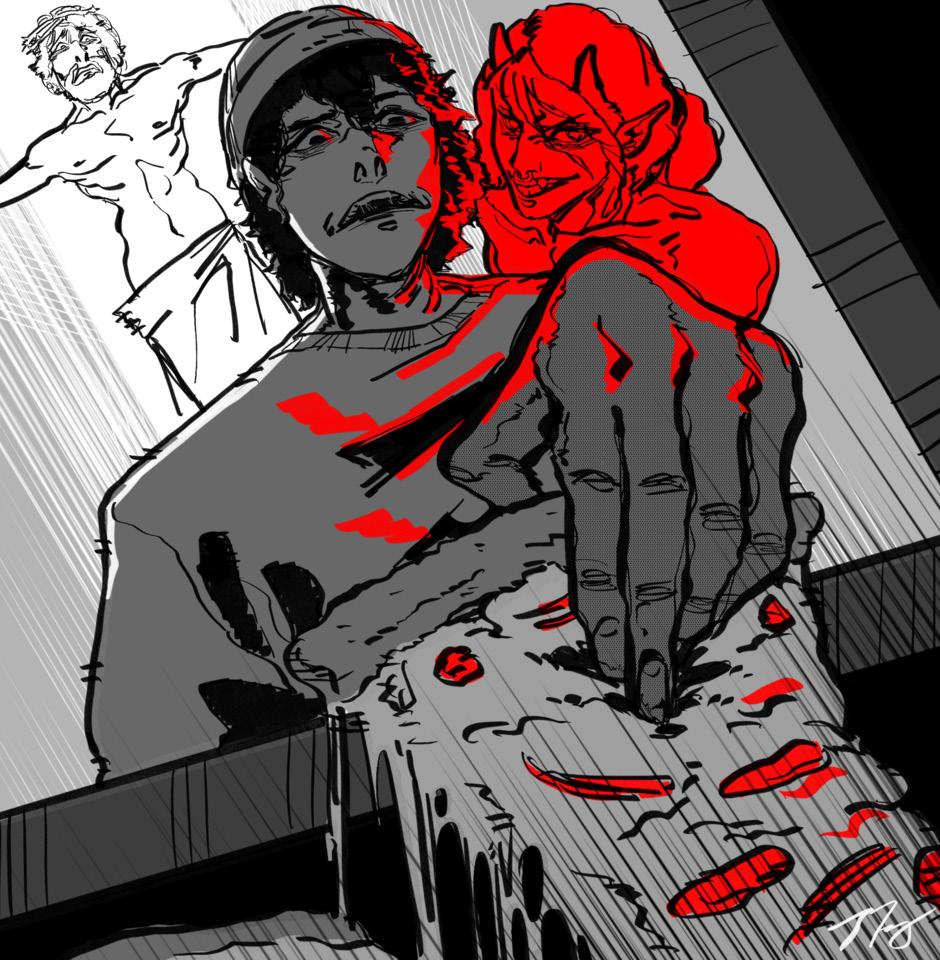
I'm going to have another piece of BBQ pizza, even though it's sinful.
 Graphics by Wei-An Jin
Graphics by Wei-An Jin
downs, but the violin gave me something that no amount of friendship conficts and preteen insecurities could take away. As a 12–year–old kid, I wasn’t anyone important. But when I played the violin, I meant something to the people listening to me. When I worked towards my goals and crossed them off one by one, I meant something to myself.
Towards the end of eighth grade, my childhood dream of going into music turned into something more meaningful. It occurred to me one May afternoon that I could truly see myself continuing down this path for a very long time. At that moment, music was no longer a pastime but something for which I would be willing to give up a lot more.
I hit the ground running freshman year. I got a new teacher and jumped into more advanced repertoire. I woke up even earlier in the morning to practice and signed up for more performance opportunities. In January 2020, I registered for my very first competition and practiced upwards of four hours a day, hoping to win.
Instead, I got carpal tunnel in both wrists.
I was told to stop playing for a few weeks, which slowly turned into the entirety of quarantine as hospitals went into lockdown and I couldn’t get physical therapy for several months. During this time, I was still learning new pieces, but my capacity for playing was extremely limited, and one overzealous move could set my recovery back by weeks.
I felt as if I was losing the thing that made me, well, me. I began to wonder: What was my worth if I wasn’t continuously striving to improve at violin? What was my life supposed to be if not one completely dedicated to music?
Thankfully, I didn’t have to ponder those questions for very long. I got physical therapy and recovered, and by junior year, I was auditioning, performing, and competing again. The year that COVID–19 restrictions lifted was a whirlwind. I woke up every morning at 4 a.m. to practice and spent hours driving to and from GTCYS rehearsals, violin lessons, re-
hearsals with my accompanist, concerts I was playing in, concerts I wasn’t playing in, quartet rehearsals, quartet recitals, my own recitals, live competitions, recording sessions for online competitions … you get the idea. On top of everything, I was studying to be a conductor, preparing for college auditions, and working to organize a music tutoring program at school so I could keep teaching violin.
As much as I was enjoying myself, I started to wonder whether this was really the life I wanted. But, I thought, who was I if not a violinist? It was too scary of a question to consider, so I didn’t.
The summer before my senior year, I toured southern Italy with GTCYS (I was now serving as principal in the top orchestra), visited several music schools with my dad, attended All-State Orchestra camp, and participated in a chamber music festival with my string quartet.
I should have been enjoying myself that summer, but instead, I was unbelievably stressed and started making excuses to avoid my instrument any chance I could. It occurred to me that maybe I didn’t want to go into music professionally. But by this point, I had completely lost track of where I ended and where my art began, and the prospect of disentangling the two was so daunting that I refused to entertain it. After all, who was I, if not a violinist?
Then, one August afternoon during a particularly arduous rehearsal at the chamber music festival, something inside of me snapped.
“I’m quitting violin,” I told my co–violinist fatly. Then, I packed up my stuff and left the room.
I felt like I had just thrown away the last seven years of my life with that statement. But I also felt a bit better.
Technically, I didn’t quit. Senior year, I still led my school orchestra and played in my quartets. I successfully launched my music tutoring program and continued to perform frequently. I played my senior solo and graduated with enough musical accolades for all my years of hard work. My friends told me that I looked happi-
er. I felt happier. But I also felt lost, and I worried that I had just made the single biggest mistake of my entire life. Was I still a violinist, or was I just somebody who played the violin? My question remained unanswered: Who was I, if not a violinist?
Now, I study computer science, and I spend more time in front of a laptop screen than a music stand. I don’t listen to as much classical music as I used to, and I certainly don’t practice two or three hours a day anymore. Still, even with every step I take towards a future that looks vastly different from the one I initially dreamed for myself, music has never once left my side.
I hear it in the silences of lecture halls, in the symphony of car horns blaring on Walnut Street. I see it refected in the faces of my new quartet members and violin teacher. I listen to my friends from home perform on the radio and watch their concert livestreams from my dorm room, feeling as if I am right there with them. And every morning at 7 a.m., when I drag myself to the Lauder practice rooms for no other reason than to continue doing what I enjoy the most, I fall even more in love with music.
I am not the art that I create, but I also wouldn’t be who I am if it weren’t for my art. My artistic identity is not solely tied to my artistic skill, nor is it tied to other people’s perception of that skill. It is something that can never be taken away from me even if I choose to shift my focus towards other pursuits. The quality and quantity of my artistic output do not defne my worth as a person, nor do they defne my worth as an artist. I am still the same violinist I have always been, just with different dreams now. I have had the fortune to live a musical career flled with fantastic experiences and wonderful people, all of which will accompany me to the next chapter of my life.
So, who am I, if not a violinist? The question is trivial—I will never not be a violinist. But more importantly, I will always be myself no matter what, and that’s enough of an answer for me.



In my dimly lit dorm room, on Academy Awards night, anticipation crackled through the air like static on an old vinyl record. It was the glitziest, most extravagant spectacle in the realm of cinema. As I settled into my uncomfortable desk chair, surrounded by crumpled takeout bags and half–empty soda cans, I braced myself for the inevitable rollercoaster of emotions that accompanies Hollywood's grandest soirée.

were called, their names echoing through the hushed theater like whispers in the dark. Each contender had delivered a powerhouse performance, leaving audiences spellbound and critics raving. But amidst the fervor and frenzy of the awards season, there was one name I wanted to hear most: Lily Gladstone.
The clock ticked relentlessly towards showtime, each passing second adding to the mounting excitement. Celebrities strutted down the crimson carpet in their designer ensembles, dazzling cameras fashing like bursts of freworks in the night sky. Meanwhile, I, a mere mortal cinephile, huddled closer to my screen, eagerly awaiting the moment flm pundits had been holding their breath for: the announcement of the Best Actress award.
As the ceremony unfolded, my eyes darted between the screen and the clock, my
Gladstone, the star of Killers of the Flower Moon, had carved out a niche for herself in the tumultuous landscape of contemporary cinema with her role's understated elegance and quiet intensity. Gladstone had also made national headlines when she became the frst Native American actress to be nominated for an acting Oscar. Yet, despite her undeniable talent and mesmerizing presence on screen, she remained the underdog, overshadowed by her famboyant counterparts.
Then, like a bolt from the blue, it happened. As Michelle Yeoh tore open the envelope, her breath caught in her throat;

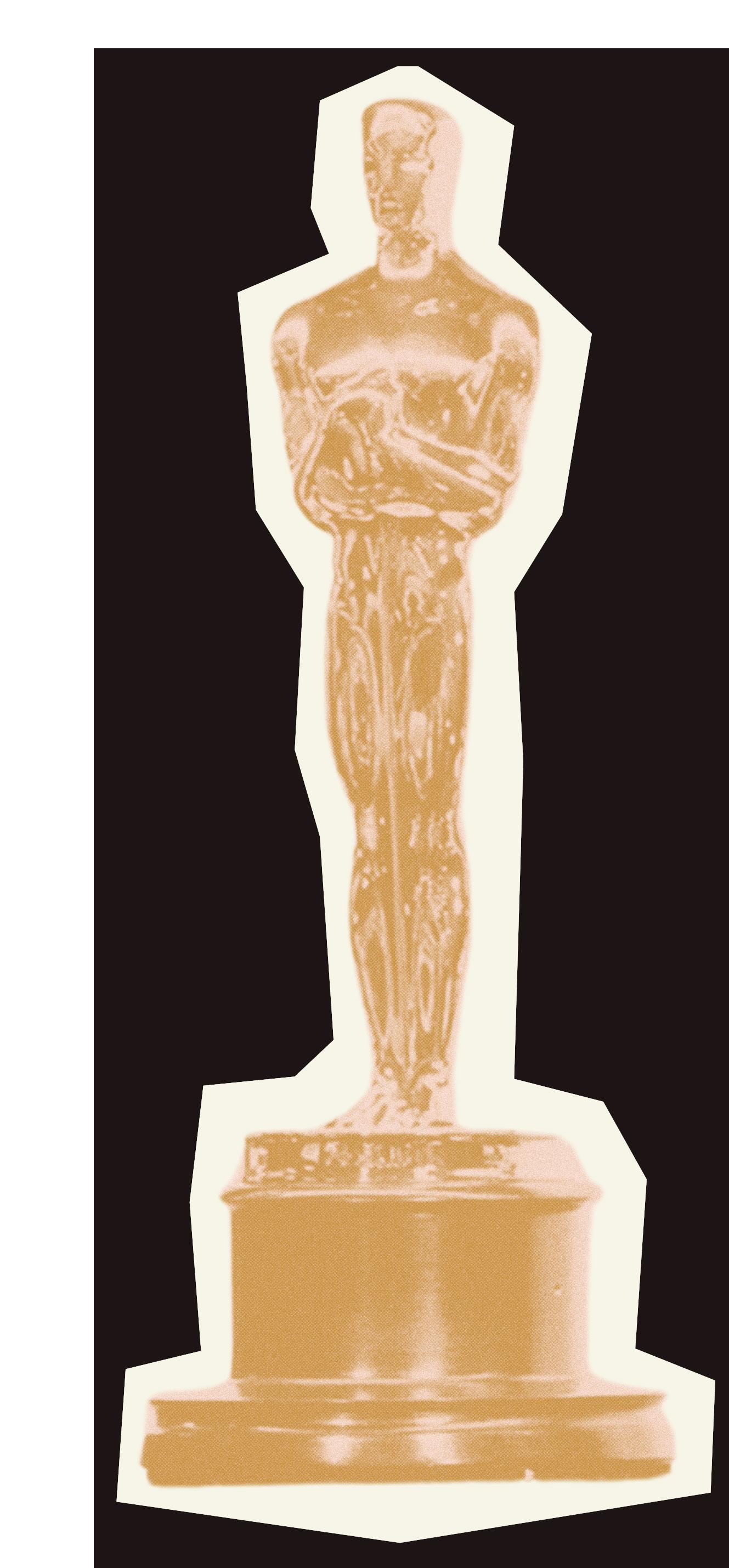
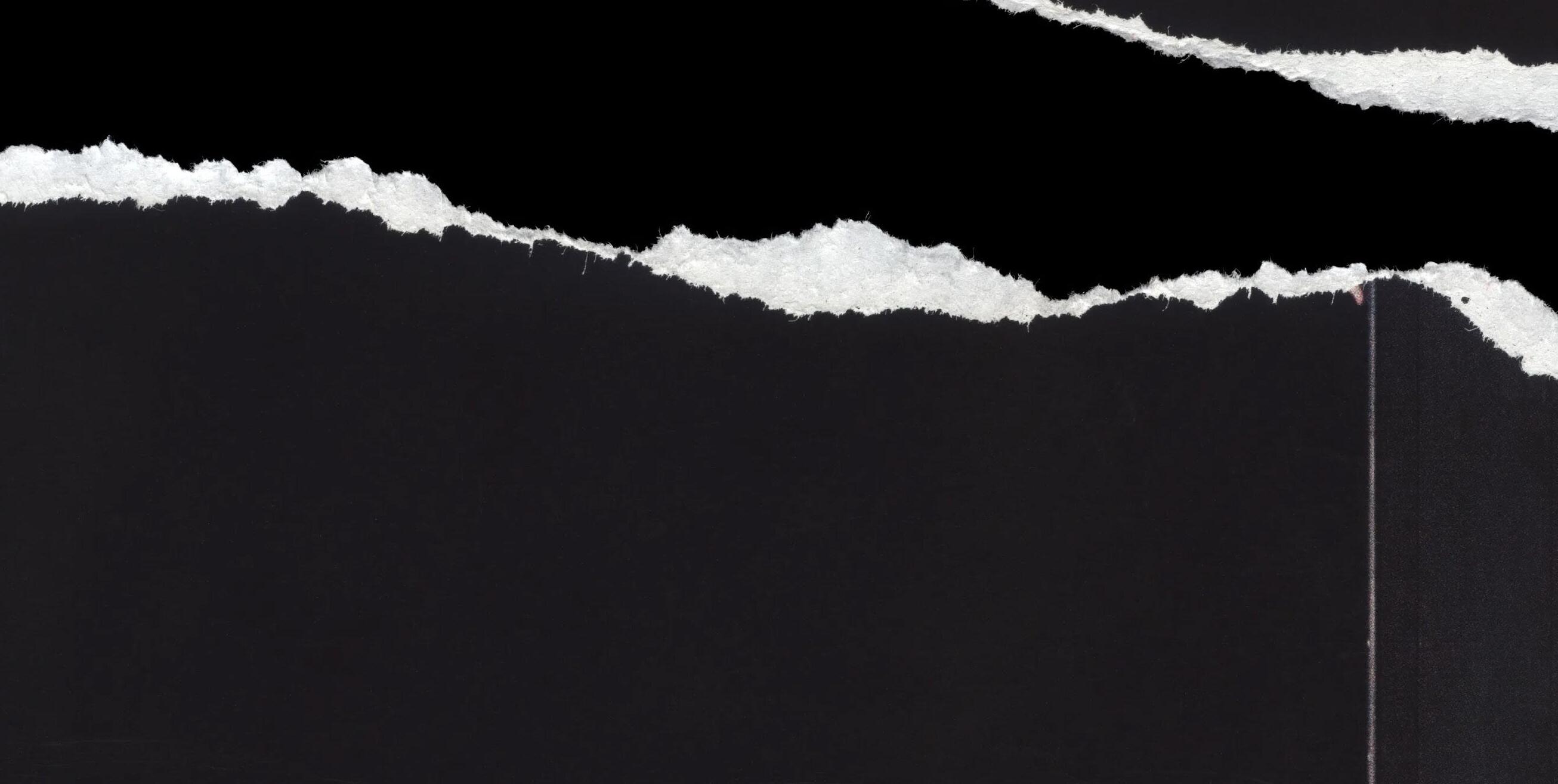

And yet, even in defeat, there was a les son to be learned, a lesson about the feeting nature of accolades and the enduring legacy of true talent. While Gladstone may not have claimed the coveted trophy that night, her indelible mark on the industry is undeniable.
As the credits rolled and the curtain fell on yet another Oscars night, I couldn't help but refect on the central theme that had emerged from the chaos and cacophony of the evening: appreciation—not just for the bold and the brash, the loud and the larger–than–life, but for the quiet, the subtle, the nuanced. Gladstone’s brilliance transcends the boundaries of awards and accolades.
At the Oscars, the Best Actress category typically rewards performances characterized by dramatic fair and emotive intensity. However, Gladstone’s nomination defed these norms. Her subtle, understated approach to acting challenged traditional expectations and sparked both surprise and debate within the flm industry.
Viewers and critics were left intrigued by Gladstone’s nomination, which prompted a reassessment of what constitutes outstanding acting. While some celebrated the recognition of authenticity and nuance, others questioned whether her subdued style warranted such acknowledgment. Gladstone’s nomination underscored the signifcance of authenticity in performance, and her refusal to step to the sideline made her inescapable.
In Killers of the Flower Moon, Lily Glad-

One notable scene that showcases Gladstone’s skill is the fnal confrontation between Mollie and her husband, Ernest (Leonardo DiCaprio), as they grapple with the devastating impact of his crimes against the Osage Nation. Despite the emotional weight of the scene, Gladstone's performance remains restrained while DiCaprio goes big, capturing Burkhart’s inner turmoil. Through subtle gestures and expressions, Gladstone conveys the depth of Burkhart’s pain and frustration, allowing audiences to empathize with her plight on a visceral level.
Gladstone’s approach to her craft en-
Gladstone’s, which prioritize depth and au thenticity over theatrics. Gladstone’s performance serves as a stark reminder of the Academy of Motion Picture Arts and Sciences’ tendency to overlook performances that don’t ft neatly into their predetermined criteria.
When comparing performances like Stone’s winng performance in Poor Things to Gladstone’s in Killers of the Flower Moon, it’s evident that the Oscars often prioritize spectacle over substance. While Stone’s portrayal of an individual with a baby’s brain and an adult’s body may have been entertaining and skillfully executed, it pales in comparison to the emotional depth and historical signifcance of Gladstone’s performance. Killers of the Flower Moon delves into the harrowing reality of a mass atrocity committed against the Indigenous people, specifcally the Osage Nation, a subject matter that carries immense weight and importance. To award a performance like Stone’s over Gladstone’s is not only a disservice to the art of acting, but also a failure to recognize the importance of storytelling that sheds light on overlooked or marginalized histories.
Gladstone’s nomination should serve as a wake–up call for the flm industry to reevaluate its standards and appreciate a wider range of acting styles. By celebrating performances that prioritize authenticity and nuance, the industry can create space for diverse voices and stories to be heard. Gladstone’s historic nomination should



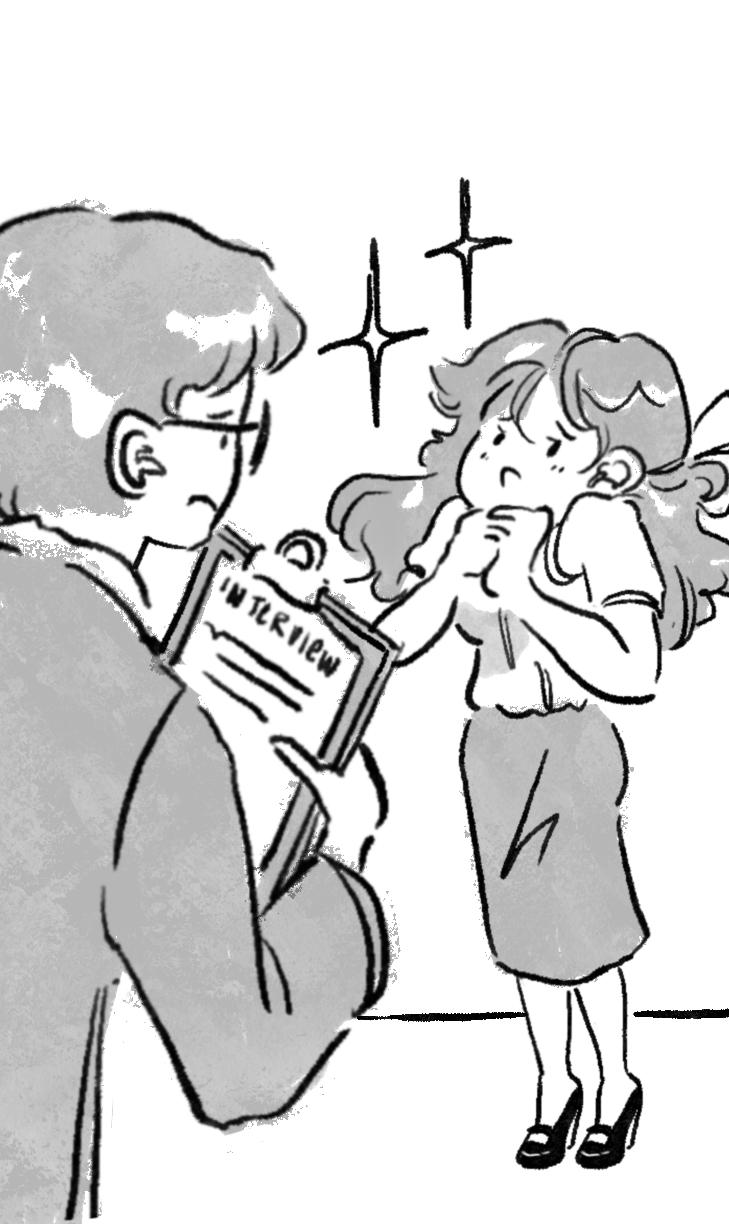
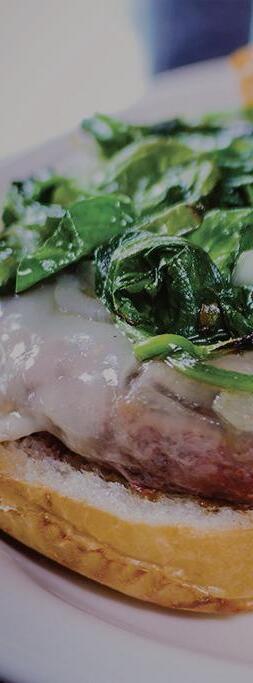




















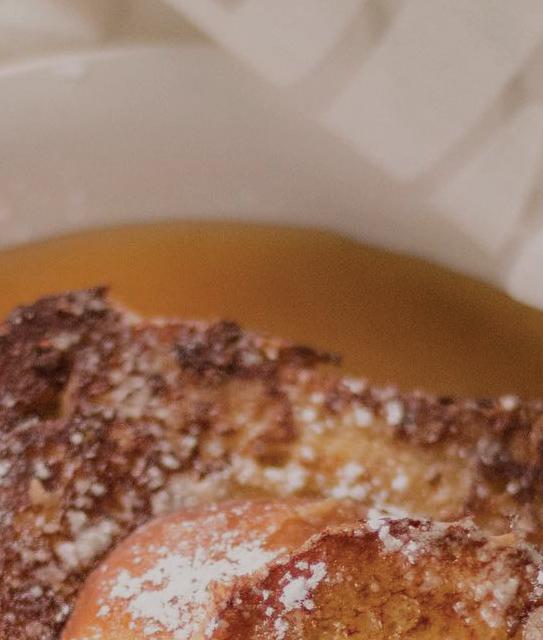

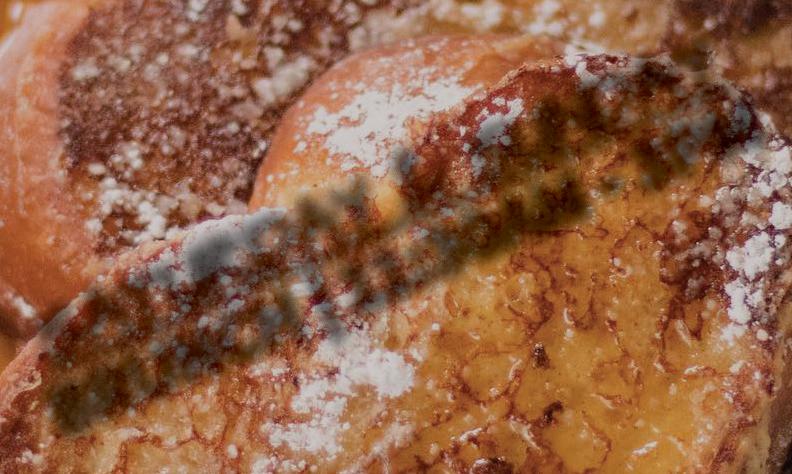











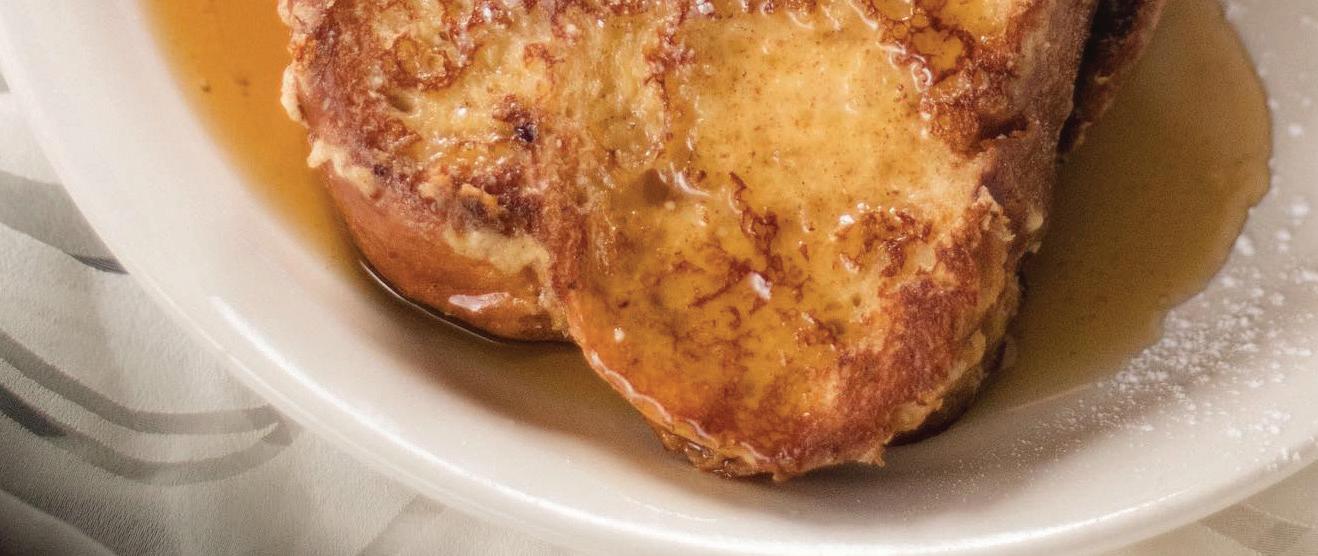





When the inaugural Spring Fling was held in 1973, with performers including Zack’s Band, Glass, and The Jesse Clanton Band, students rejoiced at the opportunity to revel in the arrival of spring and the impending end to the academic year. Current Penn students have experienced a COVID–19–era virtual Spring Fling concert, Fling on Franklin Field and SPEC’s most recent shift to Fling at Penn Park. One thing has remained the same in the 51 years since its inception: Spring Fling weekend is the greatest of Penn’s bacchanals. While the University banned alcohol and drug consumption in 1988, the administration’s decrees are no match for a Penn student’s desire to let loose after nine months in the academic pressure cooker. In anticipation of the Spring Fling Concert this Friday, April 19th, 34th Street dug into our photo archives to document the revelries of spring. From snapshots of past students old enough to be your boss at Goldman this summer to some of our favorite modern–era performers, Street chronicles Penn’s most iconic Flings in our retrospective photo essay.
Penn’s greatest weekend of performance, artistry, and debauchery: a Spring Fling retrospective photo essay
INTRODUCTION BY NATALIA CASTILLO
DESIGN BY WEI-AN JIN
PHOTOS CURATED BY JEAN PARK AND ABHIRAM JUUVADI





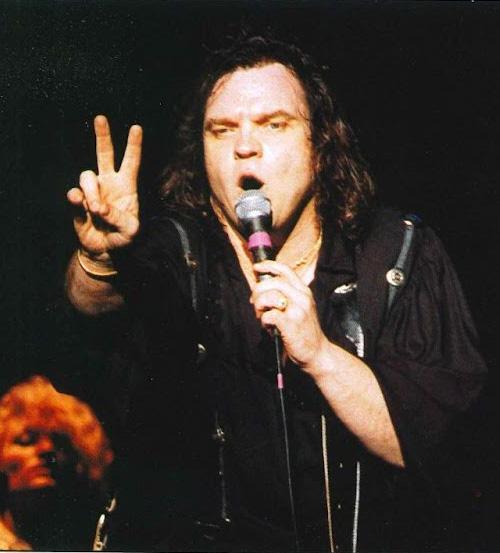
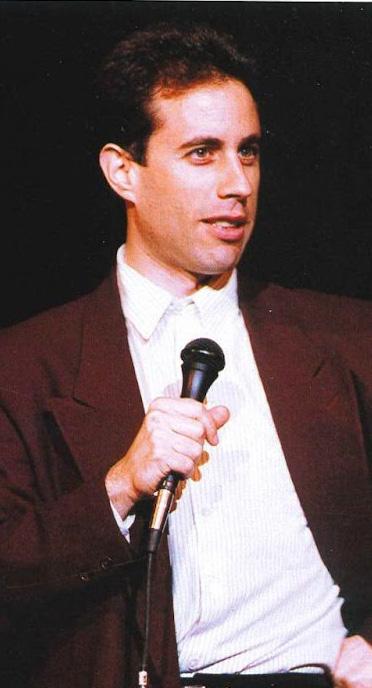
A TRIBE CALLED QUEST, THE FUN LOVIN' ANIMALS, THE TOASTERS

GEORGE CLINTON AND P-FUNK, DE LA SOUL, PETE YORN, LUCKY BOYS CONFUSION
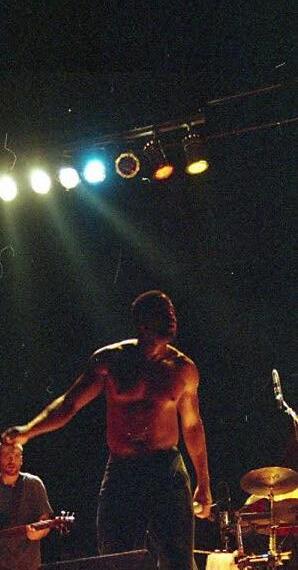
BUSTA RHYMES, THE DONNAS, JURASSIC 5, OK GO
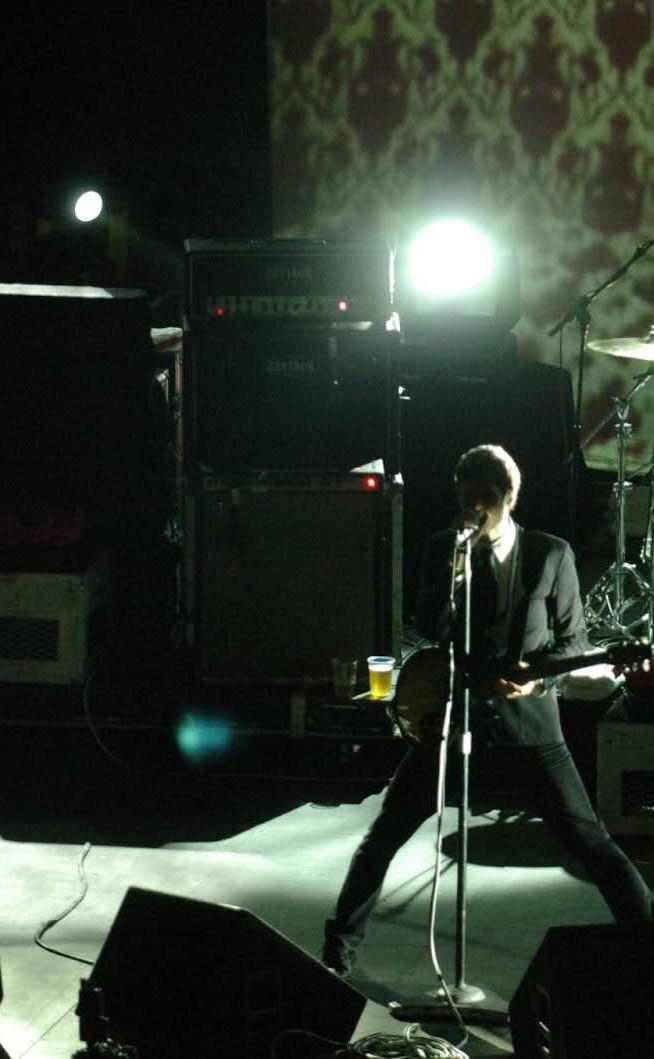

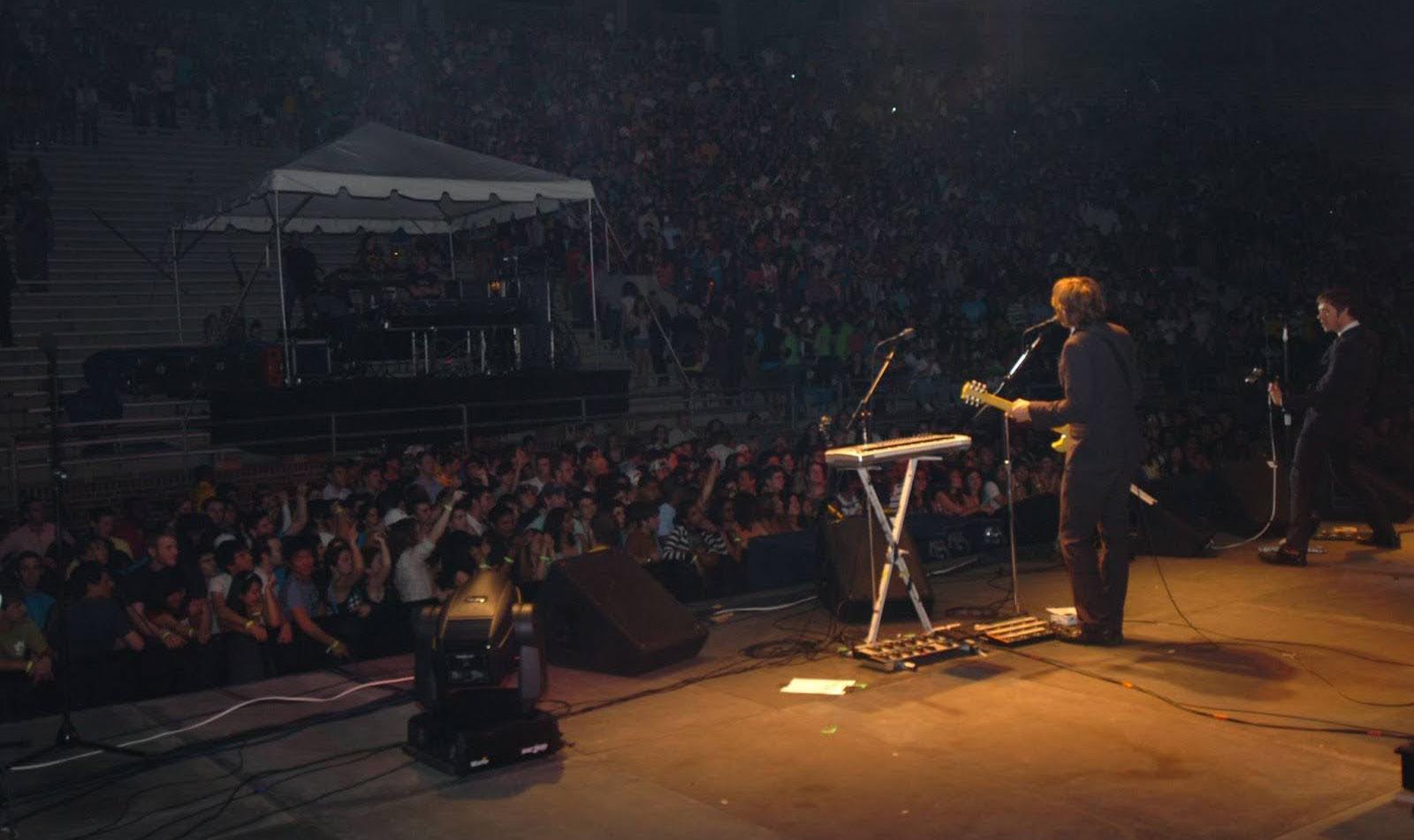



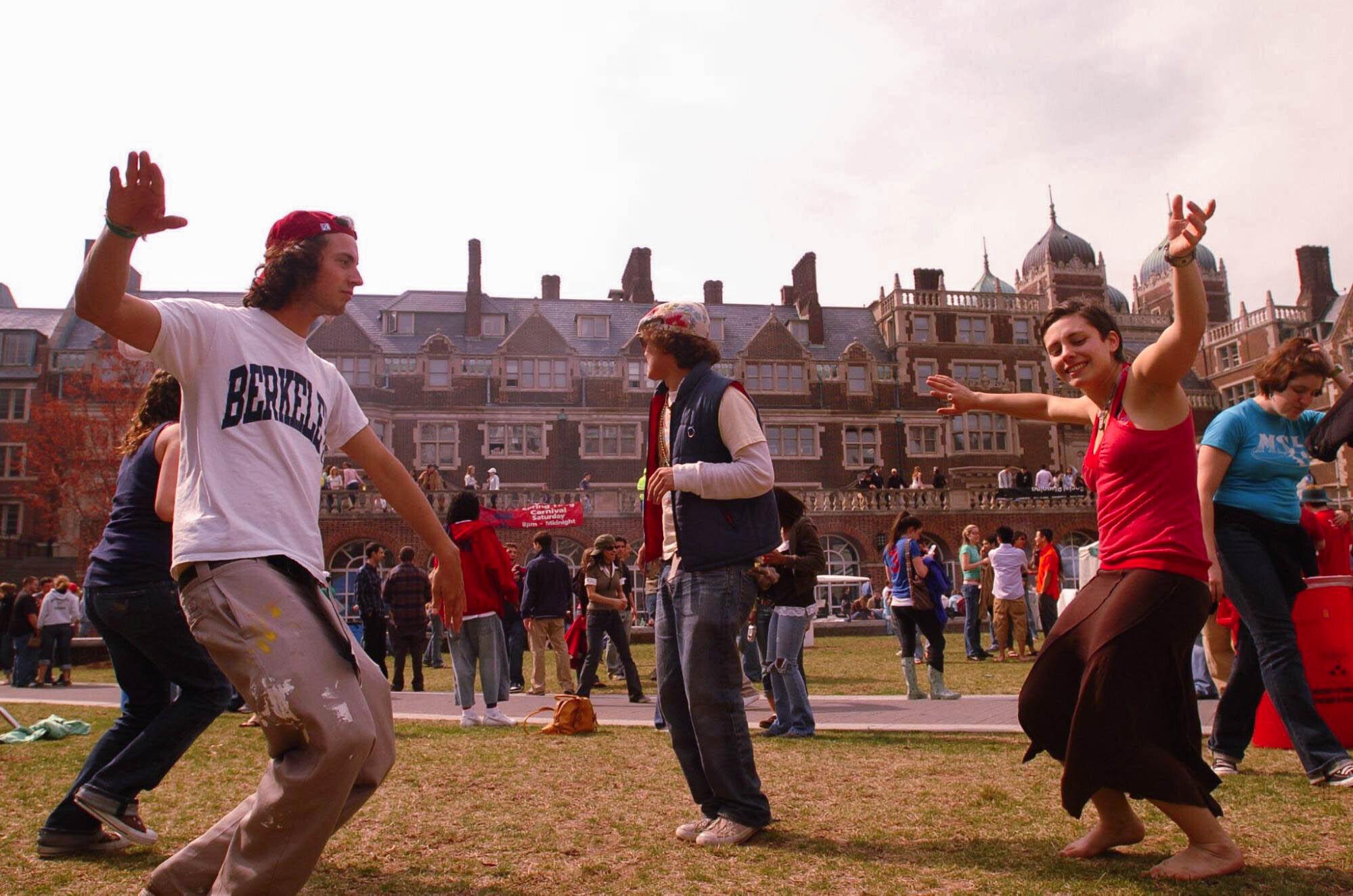


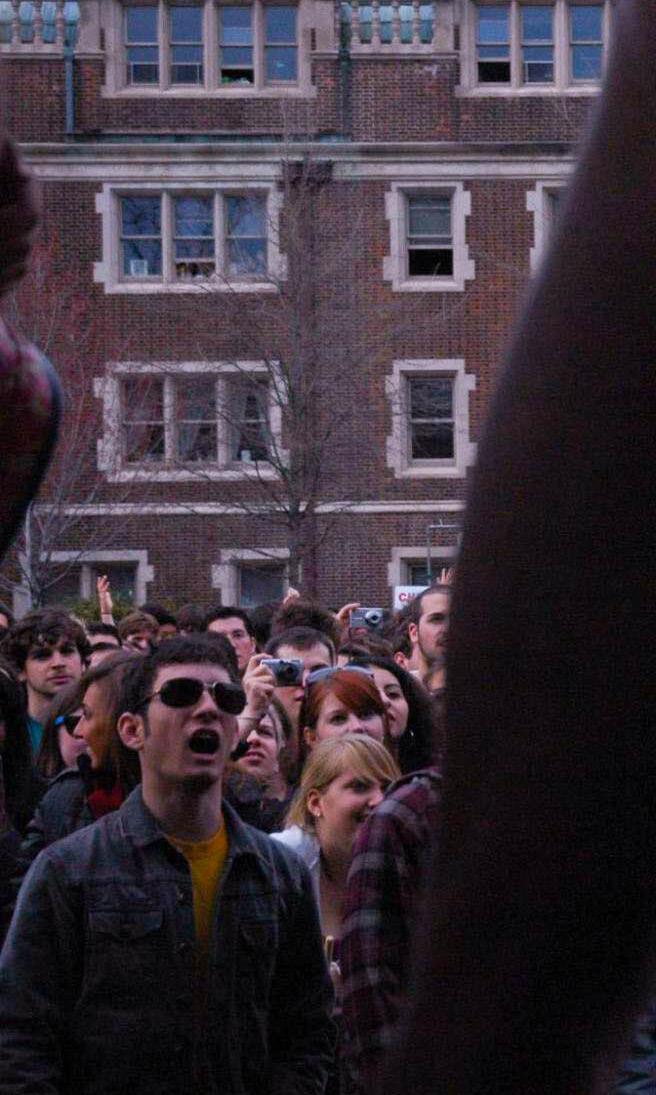





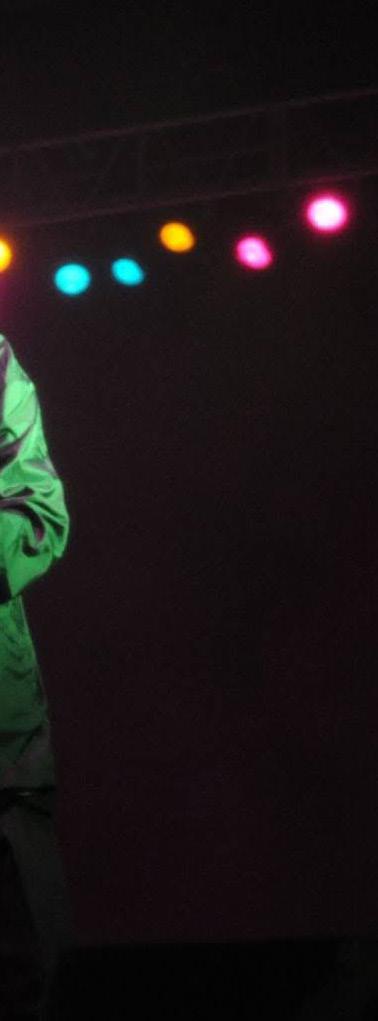



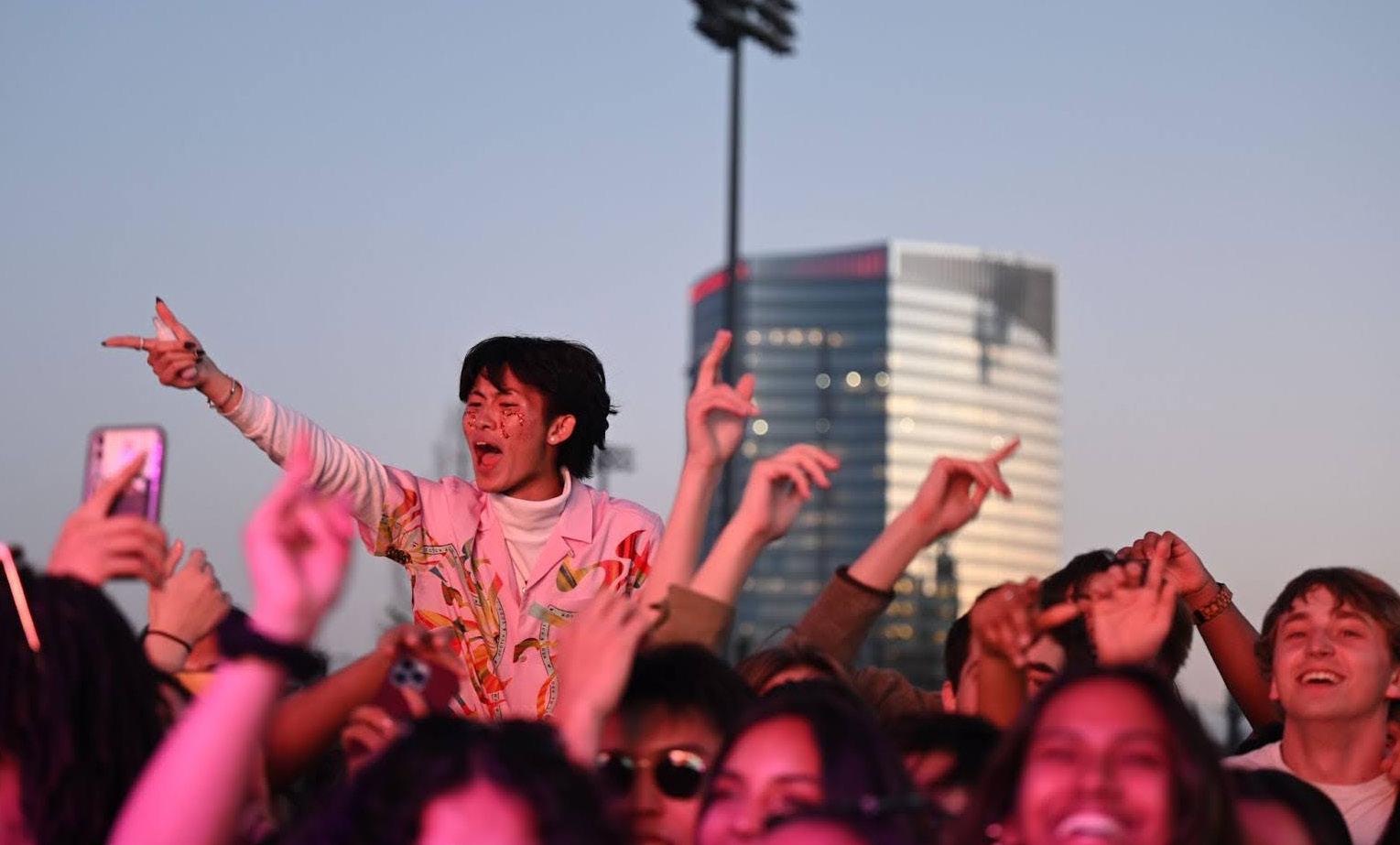



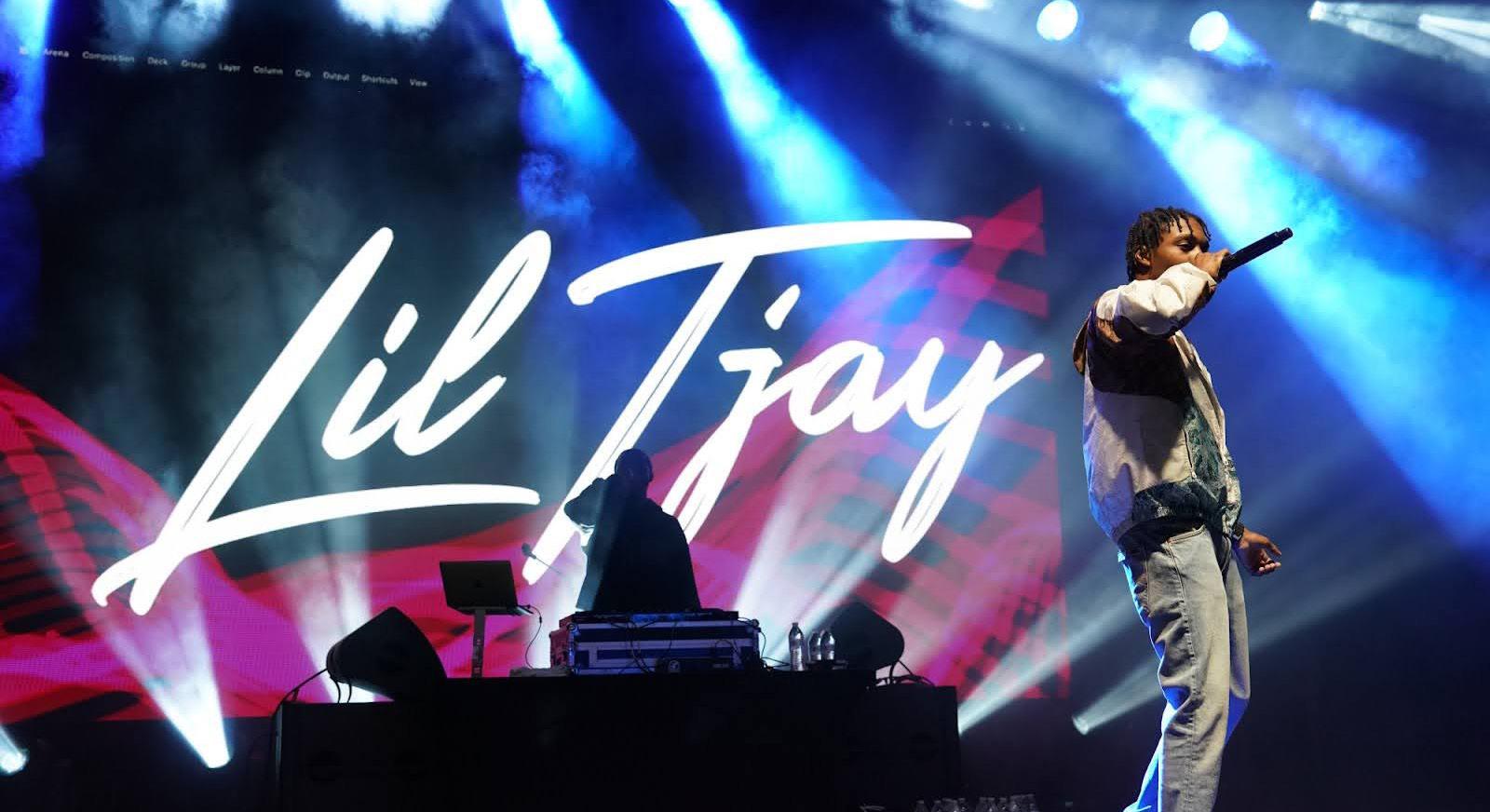


The champions of the lost wave tour talk tour, streaming discourse, and their storied origins Graphics by Insia Haque

Anticipation is a collective experience everyone in the room shares, as I peer over the balcony, looking at both the crowd in the pit and also the band on stage. Noise pop encroaching on shoegaze, the songs that play are less about the lyrics and instead hinge on components that build atmosphere. People sway, but are otherwise static, and I can’t hear anything but the band; an experience I had not been privy to when I had previously frequented concerts at The Fonda Theatre. I can’t make out much of the lyrics, and most people
BY HANNAH SUNGaround me aren’t singing. Looking at the legions of teenagers underneath me, the audience is hypnotized by the dreamy visuals that complement the ambient sound.
But nearly everyone knows the coming melancholy lyrics: “She's forgotten her car keys / And the fowers for her friends / They say she's a harpy / But she is on her meds.” My voice cracks as I sing along, emotional at the chance to see a band live that I thought didn’t even exist.
Genial voices coated by thick British accents pop out in between songs, profusely thanking the audience for coming, for allowing them the opportunity to play. Who is
this band that looks and speaks so differently from their angsty lyrics and experimental electronic interjections?
July 2016, Nottingham: a man is perusing CDs at an Oxfam charity shop, his local thrift store. The discs clank one after the other as he fngers through them when something catches his eye—an anime fgure (later realized to be from the manga MintnaBokura ) stares at him, a barely legible name in an obtrusive font scrawled across— D>E>A>T>H>M>E>T>A>L by Panchiko. The man listens: it’s a gold mine—the heavily distorted, staticky–sound due to disc rot, emulsifes the indie, somewhat shoegaze, and trip–hop infuenced EP into a hypnotic listen. Only the frst names of the supposed members are visible on the CD–R cover. There’s no record of this band anywhere. The man does what not many would be brave enough to do. He goes on 4chan, to the music board /mu/.
Turns out good things can come out of 4chan. The demo spreads throughout niche music communities on forums like Reddit, fnding its way to YouTube and other social media platforms. A cult following begins, made up of devotees who love the music and those who are intrigued by the lost wave. One camp of Panchiko listeners believed the original 4chan poster was simply marketing his own music, although he didn’t follow up to claim his newfound fame. Another sect believed it was a side project of an already famous band: Death Grips, making their own secret virtual Gorillaz–esque band.
But in 2020, great internet sleuthing won the day, and the mystery of the infamous band was solved.
If you aren’t chronically online, you likely haven’t heard of Panchiko— but don’t feel bad. For 20 years, its own members hadn’t even known of their success online. “We don’t know our own lore,” vocalist and guitarist Owain Davies says, as their cult following has uncovered artifacts that the band itself has yet to re-
alize. To select thousands of devoted fans, Panchiko is the pinnacle of the lost wave, and their discovery has led to a treasure trove of demos and eventually new work from the reunited band.
Davies, who is from Wales, was in the original band with bassist Shaun Ferreday and guitarist and keyboardist Andy Wright. Wright was tending to a toddler at home and couldn’t be a part of the interview. Guitarist Rob Harris and drummer John Schofeld have since joined the remaining founding members in 2020. The original drummer was not able to be contacted.
Panchiko is about to embark on their third tour in North America, with supporting acts Wisp, Glare, TAGABOW, and Weatherday. They’ve been pretty busy, as their frst date in Berkeley, Calif. is just a few weeks away on April 16. And yet, the band tries to keep their practicing to “a bare minimum,” Davies says, laughing. He asks, “Are you rehearsing, Shaun? I’m rehearsing bits at home.” Ferreday replies: “I’m practicing. I’m learning our song.”
The band is based in Nottingham, or “right bang in the middle of England,” according to Davies.
They made D>E>A>T>H>M>E>T>A>L in 2000, while in sixth form, which the band is nice enough to translate. It's the American equivalent of high school, when the lads were 16 to 18 years old. Ferreday lived, how many doors down? He counts on his

I'm only just today appreciating how much of a twink Gilderoy Lockhart is .

hand, realizing the number is three, three doors down from Wright. As young teens, they began organizing practice sessions. Recorded on an 8–track digital recorder, the group produced their EP, with near CD quality. “But it didn’t sound like [CD quality] when people found it on the internet. It sounded a lot worse.”
Panchiko disbanded sometime between 2001–2003 (the memory’s a bit hazy) because they were going to university. Not attending university was never a consideration. “You didn’t have time,” Davies says, speaking to the need to practice consistently when in a band. Ferreday agrees, adding that “Life happened.” The two both talk a lot about back–up plans and their importance. Moreover, they weren’t getting gigs or encouragement to keep making music.
Decades ago, a preinternet music industry, sans SoundCloud or Napster, meant that Panchiko relied on sending their physical demos to record companies, booking gigs, and word of mouth to get their music out there. Only around 30 copies of D>E>A>T>H>M>E>T>A>L were made,
one of which found its way to the Oxfam charity shop.
Davies was the frst to fnd out that he and his high school friends had gained fame without their knowledge in the last couple of years. Davies was at home, in the fat that he’s currently Zooming from.
When I learned Panchiko was, in fact, real, I too was at home. I was scrolling on TikTok in my bed, as was customary during the pandemic. “PANCHIKO MEMBERS FOUND,” the TikTok read. I sat up straight from my fetal position, mouth agape, and immediately sent the video to my friends.
Davies recalls, “I was in my bedroom in the basement. It was a dark January morning. I woke up, picked up the phone, had some weird Facebook messages on a defunct music site." “There were two people asking about the band Panchiko, which immediately got me thinking, that’s weird because like, literally no one knows the name of that band. That's a band I was in at school. We made a CD. We never put it on the internet. The only people who thought about it were us and some of our school friends

and why would they even be thinking about that band, 20 years later?” He responded ominously to the Facebook inquiry: “Oh, I don't know. Maybe I am, maybe I'm not.”
The inquirers nudged further. They had diverging interests: one really liked the music, the other thought it was “just alright.” And yet, they both tested Davies—how do we know if it’s really you? After prowling on the internet for years, a false prophet was not to be trusted. Davies thought back to decades ago when he made the record, and recollected that the sample he put in the title track was from a Sega Saturn game’s warning message. It tracked.
Ferreday was eating a sandwich in a lorry when he found out. “I thought it was truly, truly strange and bizarre,” says Ferreday. Wright was in Korea when Davies contacted him, which prompted them to, for the frst time, Google themselves. It was just then that they read the thousands of comments about them, spanning across multiple sites. It was Wright who convinced the others to get the band back together, as Davies was a bit reluctant, while Ferreday says, “I didn't
have a whole lot else going on.” But still, he “was apprehensive having not picked up an instrument in over a decade,” questioning if he even knew how to still play. He contends that he didn’t. “You start at rock bottom, you can only get better,” Ferreday laughs.
Wright had continued to work in the music industry post–Panchiko's early years as a sound engineer. “He's been a major driving force, and really good at getting so many things organized. We wouldn't be here without his energy,” Davies says, before cheekily adding, “Nobody tell him this.” Wright was able to clean D>E>A>T>H>M>E>T>A>L , which previously foated around the internet in its heavily distorted version. A remastered and reissued version of the EP came out Feb.16, 2020.
For a band whose cult following started very online, the members are very much not. “We just don’t do the internet thing,” Ferreday says. “I stopped at Facebook.”
Since then, Ferreday says they’ve been “slowly making [their] way back to modern technology.”
“You can get a bit stuck in your ways as
you age,” Davies says, poking fun at the fact that he added “the” in front of TikTok when talking about social media platforms. But given the age of their main demographic of listeners, being Internet savvy, or at least Internet profcient, is necessary to connect with their fans. He jokes that fans would’ve found them much faster if they looked on Facebook frst. “Everybody [says Facebook] is just full of boomers. They never thought they were they were searching for boomers.”
Panchiko is cognizant of the strange phenomenon of performing in their 40s, singing songs written when they were teens, to an audience of current teens. “I guess it’s good because people are feeling the things that I felt when I wrote that thing.” But still, the perfectionist in Davies can fnd his angsty, 17–year–old lyrics a bit cringe.
“I totally want to change all the lyrics,” Davies says. “I just think some of them are weird.” One of these changes came with his realization of the constant use of female pronouns in his songs. He refects now, “Who am I to comment on what about women and stuff? I’m a man.”
Following the release of their debut album, Failed at Math(s) on May 5, 2023, Panchiko performed with LSD and the Search for God and Horse Jumper of Love on their second full–length United States tour. “On both tours that we've done up till now, and on the one coming up, these guys actually wanted to play music with us and be part of what we do,” Ferreday says, still baffed.
“Everybody was very funny, and put up with our British accents in humor, and we got on. I had a great time,” Davies says. “It really sounds cheesy, but it's the people who came to our shows that made the vibe.” Panchiko played to sold–out venues, playing songs from their EP and album, all while psychedelic visuals in the background accompanied the noise rock. Utilizing LSD’s visuals person, Davies took inspiration from his favorite 90s anime and games that were pivotal during his childhood and placed visuals of those in the background of their set.
The Venn diagram between Shinnies and Panchiko listeners is a near circle. “I watched
[Neon Genesis] Evangelionon VHS back in the day,” Davies says.
“I think the struggle that Shinji goes through is universal and timeless. And it's really interesting that resonates today,” Davies says. He names Akira and Studio Ghibli flms as being timeless as well, and described the entire process of choosing visuals as them just “geeking out.” [I let Davies know of the internet’s supposition that the band just knows its target audience well, and he tells me it wasn’t part of his masterplan. Still, the shared excitement on stage and in the pit is emblematic of the band’s special bond with its fans.]
The resurrection of Panchiko speaks to the subcultures of the 90s that existed largely in small underground circles, that boast a new generation of afcionados today. Panchiko, like Evangelion , has found newfound love from younger people via mainstream streaming platforms. While their origins are rooted in the physical (CDs and VHS tapes), their popularity proliferates in the digital realm, the band is cognizant that this change has its benefts.
Many musicians, with good reason, lament the industry in the age of the internet and streaming. But for bands like Panchiko that have gotten a second chance because of the internet and its communities, this unprecedented accessibility to music is anything but a career killer.
“It's incredible. I understand other people's perspective on it. You know, their views that maybe it’s killing music, but from my experience is completely opposite,” Ferreday says. “I think it's fantastic. We all have immediate access to anything you can conceivably want to listen to. But you only have to have a feeting thought about a song that you might have been 20 years ago, and it's immediately at your fngertips and you can relive the memories from when you heard it then.”
Panchiko has since racked up an impressive 972,650 monthly listeners on Spotify. Their most famous song, the title track from D>E>A>T>H>M>E>T>A>L , has a cumulative 24,553,945 plays. The band is grateful but acknowledges how diffcult it is to be a
smaller artist without a record label, which forces them to rely on streams as their main revenue source.
“It’s a double–edged sword. As a consumer, there’s never been a better time to have access to music. But as an artist […] [earnings have] been signifcantly reduced from what it might’ve been” Ferreday says. And yet, it’s the cycle of money garnered from streaming to funding tours, to making records, that keeps their band alive.
For the past half year, Panchiko has been writing and producing “easily an album’s worth of music already.” “It’s been hectic, it’s a very new pace of life,” Ferreday says. But they take their newfound business with gratitude. “I think being handed an opportunity like this ... I'm not going to waste this. Life's precious and time is precious,” Davies says.
In terms of the future of the band, beyond the recent tour and a new album, Ferreday has his eye on “world domination; apart from that, not really [much]. Just hopefully try to keep doing it as long as people want us to.” Davies interjects, “Yeah, we don’t want to overstay our welcome.”
“If it makes just one person happy, you’ve achieved your goal of making some awesome music,” Davies says. “Keep doing it. But have a backup plan. Do a day job. Stay humble.” “You learn a lot from normal jobs.” For artists as big as they are, part of their charm comes from their relative lack of knowledge of fame, as they call themselves “random blokes.” So take their insight with a grain of salt: “There’s no expert advice on this. Because we completely, randomly fell back into this.” Wright and Davies have been able to quit their normal jobs, and the hope is to continue this momentum full–time for the entire band.
The chance of becoming famous, virtually instantaneously from a high school band project, is something of outlandish fction. So it’s not lost on the band, the inconceivable circumstances that allowed them to regroup. “It's such a privilege and an honor,” Davies says. “You can only dream of it when you make music, that you’ll connect with people.”













This month: cherry blossoms, food trucks, art exhibits—and lots more to explore.
Going to college in Philly, we’re so often bombarded—on social media and IRL—with seemingly endless options for how to spend our free time. So I’m delighted to announce that Street has done the hard part for you: we’ve rounded up what we think are the can’t–miss events for the month in one convenient place. If I’ve done my job right, there’ll be something in here for every one of our readers, no matter what you like to do with your weekends.
Catherine Sorrentino, Print EditorApril 10–14: HADESTOWN @ The Academy of Music
Raise hell at the Academy of Music’s HADESTOWN. A theatrical retelling of two iconic Greek myths—Persephone and Hades and Orpheus and Eurydice—this show explores the depths of love and death. Walk away with tears in your eyes and songs stuck in your head. Now is your chance to be the annoying friend singing, “Wait for Me.”
Tickets start at $21, 240 S. Broad St.
April 12–14: Spring Fest @ Philadelphia Film Center
Presented by the Philadelphia Film Society, Spring Fest is a weekend–long festival dedicated to a love for the cinematic. The line–up, curated by the perfectly pretentious cinephiles of Philadelphia, will include the freshest releases of this year. From earnest indies to expositive documentaries, the wide variety of this festival’s offerings will please anyone, film lover or not.
March 21–April 7: Disney’s Frozen Musical @ The Academy of Music
Ready to sing “Let It Go” alongside screaming children? See the Tony–nominated stage adaptation of the Oscar–winning musical movie, featuring all the beloved Frozen songs.
$30–$160, 240 South Broad St.
March 27–April 21: Macbeth @ Sedgwick Theater
For all the English majors out there, Quintessence Theater presents the Bard’s famous story of witches and wickedness. Get ready for a Shakespeare play like you have never seen before— darker and bloodier.
$15–$60, various showings, 7137 Germantown Ave.
Every Saturday and Sunday beginning March 30: Southeast Asian Market @ FDR Park
I’ve had the Southeast Asian Market on my Google Calendar since this summer, when a friend of mine who had graduated from Penn a few years back reminisced about how much she missed it now that she’s not in Philadelphia. Take a trip to FDR Park for
community, fresh air, and good eats. Costs vary by vendor booth, 10 a.m. to 6 p.m., 1500 Pattison Ave. & S. Broad St.
April 7–April 13: Dine Latino Restaurant Week @ Philadelphia Hispanic Chamber of Commerce
Feeling like boosting the revenue of Latinx–owned restaurants? Meet Hispanic chefs fueling the food and restaurant scene in the Philadelphia metro area by reserving your seat! Buy two entrees and receive a free appetizer or dessert.
Price varies by locations
April 8: Solar Eclipse @ Everywhere
Solar eclipses only occur every 18 months (ask anyone in ASTR 0001 why that is), and it’s even rarer when one passes through North America. Luckily, our very own Philadelphia will be able to observe a 90% solar eclipse. Grab your ISO–certified eclipse glasses, and some space–related snacks (astronaut ice cream, anyone?) and watch the show unfold from anywhere below the sky.
Free!, 2:08 p.m. to 4:35 p.m., anywhere outside
$15 student tickets, 1412 Chestnut St.
April 13–14: Subaru Cherry Blossom Festival @ Fairmount Park
Spring is here, and with it bloom beautifully pink cherry blossoms—and you don’t have to be in D.C. to experience the magic of these flowers. Celebrate the beauty of these beloved trees with live dance and music performances, local Japanese food, and even a “Pretty in Pink” pet costume contest. Free, 100 N. Horticulture Dr.
April 17: Margaret Atwood @ Harrison Auditorium
Literary force Margaret Atwood is coming to Penn for a spirited discussion. With a seasoned career lasting more than 60 years, Atwood has written phenomenal projects, including The Handmaid’s Tale and its highly awaited sequel, The Testaments. This event will be sure to impress and leave you inspired to write the next feminist cultural critique.
Free, 3260 South St.
April 17–18: girl in red @ The Met
For the girls and gays and everyone in between, artist girl in red is doing it again, and she’s
doing it in Philly! Don’t miss her two–night rendezvous with the city as she takes the world on in her Doing It Again Tour. Skipping this concert is, in her own words, a bad idea. Ticket prices vary, 858 N. Broad St.
April 19: Spring Fling Concert
@ Penn Park
The best party in Philly is happening in our backyard, and you’re invited! Spring Fling is back, and better than ever, for its 51st year. The soon–to–be–announced lineup is sure to be a crowd–pleaser, commencing a weekend of music, food, and fun. Doors open at 7:30 p.m., 3000 Walnut St.
April 20: Spring Fling Daytime
Festival @ Penn Park
The Spring Fling party does not end after the encore. Penn’s Social Planning and Events Committee is hosting a full–sized carnival, featuring student performances, giveaways, and local food vendors. There will be a little something for every Penn student … and tons of freebies. 12 p.m.–5 p.m., 3000 Walnut St.
Through April 20: (re)FOCUS
2024 @ Philadelphia Art Alliance
A multigenerational group exhibit at the Art Alliance, this year’s (re)FOCUS presents the personal historic mythologies of seven artists. Curated by Sid Sachs, the exhibition features artworks ranging from miniature ceramic figures to brushed paintings, and provides a compelling narrative of strength and sensitivities. Free, 251 S. 18th St.
April 21: StrEAT Food Festival @ Manayunk
Head up the Schuylkill to charming Manayunk for the culinary experience of the month. Grab some cash and an empty stomach to enjoy a mile–long stretch of live music, thrifting, and food trucks. Bon appétit! Costs vary, 11 a.m.–5 p.m., Main Street Manayunk
April 23: Everyday Futures Fest
Block Party @ Da Vinci Art Alliance
With more than 50 local cultural partners and community creators, the Everyday Futures Fest Block Party presents an afternoon of fun for all ages. Ranging from art installations,
and storytelling performances, to street vendors and interactive workshops, there’s something for everyone at the Block Party! Free, 4 p.m.–9 p.m., Seventh and Catharine streets
April 26: Candlelight: The Best of Hans Zimmer @ BOK Auditorium
Head to the iconic Bok Building, a school building–turned–artisan space, to experience the orchestra by candlelight. Enjoy a night dedicated to Hans Zimmer’s top hits, with music from Inception to Interstellar. After the concert, head up to the Bok Bar on the roof of the building, and enjoy the views of Philadelphia. $45–$55, 8:30 p.m., 800 Mifflin St.
April 26–28: Philly Black Pride
Don’t miss out on this annual four–day Pride event that emphasizes the strength and resilience of Philadelphia’s community of LGBTQ+ people of color. Events include the Society Lights Opening, Poetry Slam, Black Joy, and Healing Summ. Free entry, various times and locations.
April 26–May 5: Madame Butterfly @ The Academy of Music
Karen Chia–ling Ho and Anthony Ciaramitaro make their company debut, bringing Puccini’s achingly beautiful score to life as the young geisha Cio Cio San and United States Navy Lt. Pinkerton— beyond stereotypes. Be prepared to get all the feelings while listening to this opera. Tickets start at $25, various times, 240 S. Broad St.
April 26–28: Mozart’s Requiem @ Philadelphia Orchestra
A mysterious and unfinished piece from Mozart, his final Requiem is full of haunting emotions and humanity—a testament to his magnificent talent, undiminished even in the face of the end. Led by conductor Nathalie Stutzmann and featuring the vocal talents of the Philadelphia Symphonic Choir, the Philadelphia Orchestra’s rendition is a must–have for this final, canonical work.
Tickets start at $40, various times, 260 S. Broad St.
April 26–June 30: Crafted in Philly @ All of Philadelphia
Do you often find yourself touting the
differences between pale ales, stouts, and hazy IPAs, or swearing you can identify the strain of yeast fermented in your lager? Crafted in Philadelphia, a two–month beer tour of the city is the perfect event for you. Hosted by BrewedAt and Let’s Rallie, this brewery tour is a time for your pretentious beer expertise to shine, all the while supporting local businesses.
$35, multiple locations
April 29: Jacob Collier DJESSE VOL. 4 NORTH AMERICA TOUR @ The Met
Five–time Grammy winner Jacob Collier will be at the Metropolitan Opera House for a show celebrating the finale of his four–volume epic Djesse series. From collabs with SZA to Alicia Keys, get ready for an unforgettable night.
Tickets start at $48.10, 6 p.m., 858 N. Broad St.
Through April 30: Sisterhood Sit–
In Trolley Tour: Sitting Pretty @ Sisterhood Sit–In
Themed “Sitting Pretty,” the 2024 Sister Sit–In Trolley Tour celebrates Black womanhood across all ages to create a powerful narrative that spans from boomers to Gen Alpha. By highlighting some of the iconic locales in Philadelphia’s heart, the trolley tour guarantees a soulful journey of heritage and legacy. $50, various times, 258 E. Girard Ave.
Through May 12: Ritual of Self: Isaiah Zagar’s Self–Portraits in Paper @ Philadelphia’s Magic Gardens
The city’s favorite public mosaicist takes center stage at Philadelphia’s Magic Gardens (again!) with this exhibition featuring a revelatory selection of never–before–seen mixed–media artworks.
$12–$15, 1020 South St.
Through May 19: Alexey Brodovitch: Astonish Me @ The Barnes Foundation
Don’t miss the iconic exhibition of the art director of the U.S. fashion magazine Harper’s Bazaar for nearly a quarter century, featuring original and collaborative works by Brodovitch. Run, don’t walk, to see his impact on print culture today.
$5 student tickets, 2025 Benjamin Franklin Pkwy.

This Philadelphia native is making songs that she wants to listen to and we can't get enough
BY KATE RATNER Photo Courtesy of Isa MerriamJulia Pratt has never stayed in one place for too long. She spent her childhood years moving around the country and overseas for her mother’s job. At 23 years old, Julia is still on the road, performing sold–out shows and opening for her favorite artists and bands. Amid the chaos of change and the plight to find home, for Julia, music has always been a constant.
On an early Saturday evening, Julia and I take shelter from the rain in the basement of World Cafe Live, a familiar venue for two Philadelphia natives. Julia would be playing a show in the Music Hall at WCL later that day, opening for Angie McMahon. “I’m happy to be home,” she announced later that night as she took the stage.
Before I have the chance to introduce myself, Julia wraps her arms around me. She exudes the same warmth and comfort as her music does. Julia sits across from me in the WXPN studio, dressed in all black with her hair delicately slicked back into a bun.
Jazz music was Julia’s first love, ignited by days spent listening to instrumental jazz with her father. Growing up, Julia played saxophone in her school’s jazz band and wrote poetry in her free time. In high school, she found a way to combine her passions for playing music and writing poetry: songwriting.
When Julia began writing songs, she turned to her most beloved jazz vocalists for inspiration. While she regards Billie Holiday, Ella Fitzgerald, and Frank Sinatra

as the “greats,” Julia’s biggest musical inspiration is Amy Winehouse. “[Amy Winehouse] combined this jazz that I grew up listening to and pop,” she says, “She was a big influence for me to start writing my own songs and figure out my own sound.” Julia’s Spotify playlist titled “songs that rewired my brain” ranges from jazz classics to indie up–and–comers like Eloise, quinnie, and Madison Cunningham.
Julia released her first song, “All the Girls are Crazy,” when she was 17 years old during her senior year of high school. At her Connecticut boarding school, the
idea of pursuing a career in music felt like a distant fantasy. “Doing music wasn’t really an option discussed with me outside of going to a Berklee or a Julliard,” she says. After graduating from high school, Julia took a gap year and began producing her first EP Fallout . Then, she spent a year studying at Loyola Marymount University before she realized that music was more than a hobby.
Now, Julia is a student at Berklee Online, the virtual campus of Berklee College of Music. Julia chose an online music program because it allows her to get a college education while touring. “Sometimes after a show, I have to just take a shower and do my homework,” she says with a laugh. After changing her major three times, Julia settled on Music Business. “I enjoy it because all of the classes directly relate to [my experience],” she says, “I get to learn a bit more about the members of my own team … I actually feel like it’s brought me closer to my team.”
In 2023, Julia released her second EP Two to Tango , which she describes as a “hodgepodge” of music. The four tracks range from solo projects in her boyfriend’s basement to collaborations with her favorite artists. “A Little Love,” the album’s lead single, features Matt Quinn, the frontman of indie rock band Mt. Joy and fellow Philadelphian. “I’m a longtime Mt. Joy fan,” Julia admits, “Matt is a really big songwriting inspiration to me, so I was very flattered and stoked when we got connected.”
After performing a song with Mt. Joy at The Mann Center in 2022, Julia shared her demo folder with Quinn. Quinn’s favorite song on the demo was “A Little Love,” an airy and harmonic tribute to the end of a relationship. “When [Quinn] told me he liked the song, I, like, shit my pants,” Julia jokes. She performed the song solo later that evening, her velvety vocals enveloping the quiet, swaying audience. “A little love ain’t s’posed to be this hard,” she repeated.
The other songs on Two to Tango include “Hopeless Romantic,” “Julia, Baby,” and “Backseat,” a collaboration with producer and songwriter Ehren Ebbage. That night, Julia asked the audience: “Has anyone ever been the problem in the relationship?” Several hands shot up, and she dedicated “Julia, Baby” to making this confusing and, often, painful realization.
On March 15, Julia released “Carolina,” marking the shift into a new era of her musical journey. The song tells of a bittersweet road trip to North Carolina in 2022. This was Julia’s first time returning to the place she called home for four of her middle school years. “I think I was just hit with this realization that [North Carolina] wasn’t my home anymore, even though it was so impactful to me,” she says, “I wrote the song pretty shortly after that experience, and it means a lot to me because I think it was the first time I articulated those feelings out loud.”
Julia’s relationship with “Carolina” is a complex one. While she recognizes the ways she’s grown since they were last acquainted, her time living in North Carolina will always be a part of her. She pleads: “Well, I’d hoped you’d love the same / And accept the ways I’ve changed, Carolina.”
For Julia, releasing this song lifted a weight off of her shoulders. “I identify myself as being from Philly, but, then, there are parts of me that were made by living in the South and living in the South as a brown person,” she says, “I think that “Carolina” was a really big step for me in realizing that so many things can be true at once.”
In her upcoming projects, Julia plans


to remain vulnerable, expanding on her childhood and the people and places who raised her. “I think I’ve been pulling a lot recently about my family and my upbringing and, kind of, dissecting those really formative relationships that we have early on,” she says. Julia credits
her “ceaseless self–reflection” as a driving source of songwriting inspiration.
When I ask Julia to describe what home means to her, she responds “messy.” However, her unique definition of home has shaped her as a musician and as a human being. “I think that it’s made [the music]
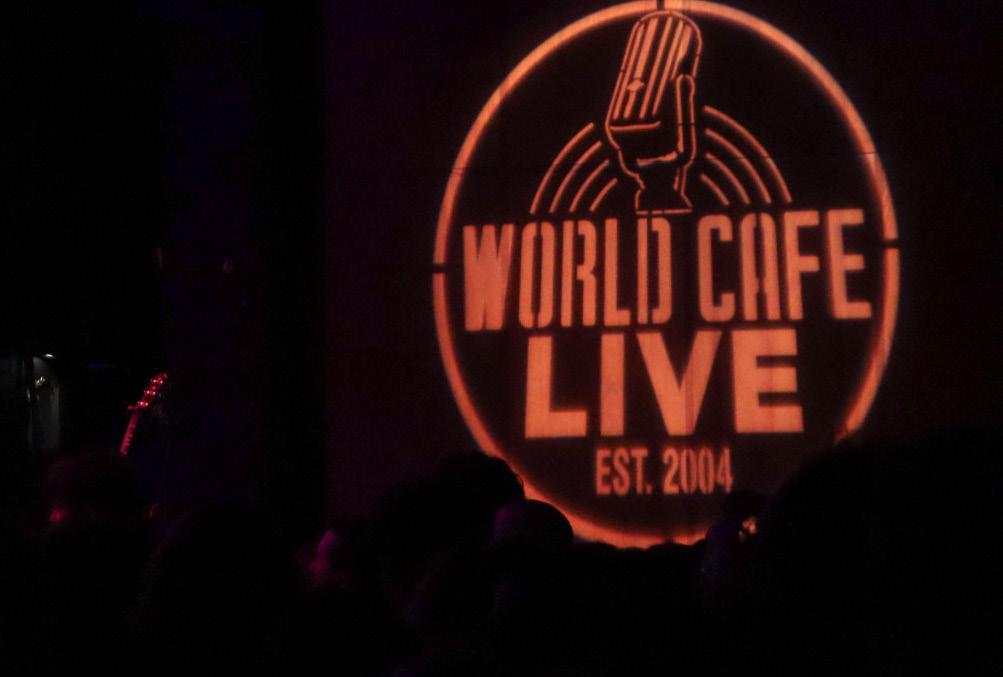

really nuanced because I don’t think of home as a comforting thing because there was so much turmoil around it,” she says, “... a lot of my perspective comes from a place of being unsure, so I feel like that is hidden in everything.”
Julia toured for the first time in 2023
with Australia–based Vancouver Sleep Clinic. This year, she began touring during the second week of January and has been on the road since, supporting flipturn, Angie McMahon, Mipso, and Sammy Rae & The Friends. Julia describes the tour as an experience with a “huge

learning curve.”
While Julia is well–versed in adjusting to new cities and surroundings, her moments in Philadelphia have been most precious. Last month, she opened for Sammy Rae & The Friends at The Fillmore, located a walking distance away from her Northern Liberties dwelling. “Playing at The Fillmore here was the best,” she says, “I love it so much, and I wanted to play there forever.”
Julia encourages college–aged creatives to pursue their interests, whether it be playing gigs on weekends or a full–time career in the arts. “I think if you love something, you owe it to yourself to try it,” she says, “It doesn’t have to be all–consuming … but don’t deny yourself the experience of doing something that brings you joy.”
Julia Pratt doesn’t know what the future holds, but she is optimistic. She asks the universe for a collaboration with Florence Welch, tour dates in Europe, and the opportunity to release as much music as humanly possible. In the meantime, Julia will anticipate her first–ever headlining show at The Foundry in May.
While Julia still struggles with the idea of home, she feels the comfort of belonging in little moments: at home cuddling with her cat, traipsing between her piano and bass guitar on stage, and sharing her heart through words and melodies.
Julia Pratt is performing at The Foundry on May 11, 2024, at 8 p.m. Doors open at 7 p.m. k
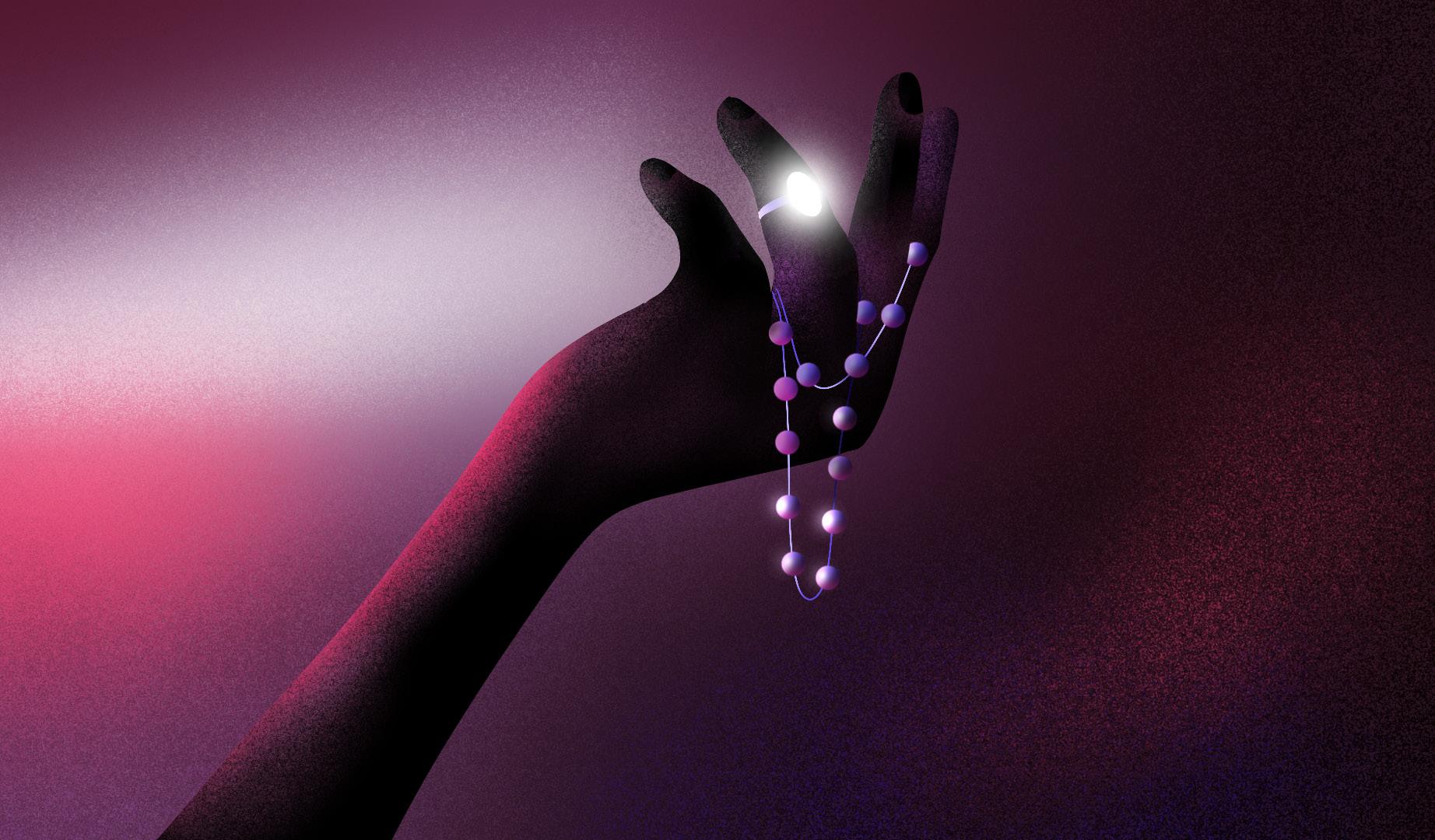
You might wear jewelry, but probably not like this.
BY STELLA LEEIllustration by Emmi Wu
The queen may be dead, but the aristocracy she stood for is still alive and well. For most, balls are the substance of Jane Austen fantasies and Cinderella adaptations. For a select few of the world’s politically elite and substantially wealthy, however, the events of Bridgerton–past are an annual occurrence. Each year, literal princesses and those ordained through money alike gath-
er in Paris to be presented to high society in a debutante ball. The event, however, wouldn’t be complete without the extravagant outfits and decadent jewels piled atop each attendee. From $3 million diamonds to Marie Antoinette’s collection, the necks, ears, arms, and faces of Europe’s fledgling elite pay homage to their extensive lineages and deep pockets. Embedded within the glimmering stones, however, is a long
tradition of exclusivity, wealth signaling, and treachery that is proving difficult to fracture.
Le Bal des Débutantes, founded by Ophélie Renouard, has become a staple of the rich and famous’s calendar since 1994. Renouard saw the event as a means to fundraise for cardiology research for child heart defects. The event also supports the World Central Kitchen, providing meals to
vulnerable communities in crisis. On Nov. 25, 2023, the newest class of debutantes— daughters of famous Hollywood celebrities to Olympians—met for a night of glamor and opulence inside the Shangri–La hotel.
Debutante balls were historically places where young women could be presented to appropriate cavaliers of similar class; it was a means of creating politically prosperous marriages without including new, unwanted lineages to the aristocratic class. The girls would be trained to become the pinnacle of femininity and high–class grace from their dresses to their curtsies. Jewels were yet another way to emphasize femininity and wealth to a potential suitor.
While the 21st century has mostly removed the connotation of marriage prospects from the modern event, the debutantes are still bedecked with jewels, curated by the luxury jewelry brand V MUSE. The brand’s mission states that it hopes to ground "itself in the wisdom of tradition" and evoke "the tender memory of an exquisite yesteryear," which was certainly reflected in the extensive histories and craftsmanship of the pieces.
Hannah Husain, a Pakistani debutante, flaunted a statement necklace that had previously been sold for almost $3 million. The emerald and diamond work can be traced back to Princess Maria Carolina of Bourbon–Two Sicilies in 1810. Likewise, Advaitesha Birla—daughter of one of India’s oldest business families—displayed another necklace that had its roots in royalty: straight from the collection of Marie Antoinette’s daughter, Princess Marie Anne. The jewelry’s extensive history also comes with a hefty price tag of $575,000.
The connection between wealth, jewelry, and femininity has existed since the ancient Greeks. Even Aphrodite, a goddess representing the utmost love and beauty, was commonly depicted wearing jewels. It seems that, even as a divinity, jewelry is still a necessity to be perceived as feminine.
The superficial qualities of jewelry are their values. This parallels the Hellenistic perception that women represented highly valuable assets based off of their physi-
cal appearance. Moreover, many pieces of jewelry included floral imagery, invoking connotations of desirable traits of fertility and health. Moreover, the Greek god Eros, patron of sexuality and desire, was even said to appear in the form of earrings or a gold ring. In other instances, some frequently worn necklaces featured bejeweled portraits of the priestess Lo, seducer of Zeus, or other pinnacles of female beauty, which illuminates the parallel between jewelry usage and Greek beauty standards. By wearing these pieces, Hellenistic women would invoke the imagery of sexuality, fertility, and grace that the jewelry symbolized.
From the fourth to the first century, BCE, elite women in Greek society were expected to adorn themselves with jewels to keep up with the social expectations of their class. Jewelry became a means of commodifying these women because their self–ornamentation was a direct measure of their wealth and femininity—their only available metrics of success in that society. Jewelry, constructed from rare gems that were often only attainable through foreign trade, stood for immense wealth and also political connection. Women would most notably flaunt these pieces in aristocratic wedding ceremonies in which both the woman and her jewels were being exchanged for a politically or economically advantageous familial connection. Here, women were evaluated not only for their individual qualities but also as a symbol of their family’s economic prosperity.
Likewise, the young women at the 2023 ball were superficial representations of the lineages they descend from. They were expected, in the manner of a debutante ball, not only to present themselves to high society but also to be viewed as a means of reinforcing their families' positions within said society. Multimillion dollar jewelry communicates not only an adherence to the traditional standards of femininity, but also a signal of a family’s wealth.
Moreover, each expensive jewel featured in the extravaganza was one–of–a–kind, and their reputations and histories
bred exclusivity. Debutante balls not only are about known wealth, but also serve an important purpose of reinforcing the aristocracy as a practically impenetrable social circle. Renouard doesn’t allow any wealthy family to submit a debutante, though she says that she gets many people willing to pay. Instead, she selects the debutantes herself and says she looks for those who have an interesting story to tell. Yet, the stories of the girls and their families are consistently intertwined with wealth or nobility. This inclination towards exclusivity is reflected by the centuries of history embodied within the jewelry chosen for the event. Every diamond, like every family in attendance, has a story that demands respect in high society because it was affiliated with prominent women or important historical periods.
Jewels tell stories and also play prominent roles in our own. They signify lifelong commitments and memories. In pop culture, the jewel can be both the liberator of the desperate treasure hunter and the oppressor of the young, unknowing bride. Their physical manifestation of money, class, and femininity gives jewels great power over our lives. On a smaller scale, wedding rings and gold cross necklaces tend to validate our own self worth. If a significant other spends a lot of money on an engagement ring, it quantifies their devotion and love. Likewise, if a woman is able to afford the Tiffany & Co. diamond necklace, she too must be worthy of the adornments she sports.
Thus, the paradox of jewelry becomes apparent. For the families that these women belong to, jewels are a means of gaining power, notoriety, and favorable connections. To the actual women who wear them, however, the same pendants diminish their individuality and self worth to the gems that bedazzle them.
Most of us could never fathom wearing millions of dollars around our necks and probably will never be in the situation to do so. However, in the European debutante scene, the young women who partake are seen, by their families, to be worth their weight in gold. k
Villeneuve brings a breath of fresh air to the action movie slump.
BY AARON VISSER
The cinematic era defined by superhero films has come to an anticlimactic close. Marvel movies are flopping and copycat rivals are failing too. Computer–generated imagery should have been a godsend for sci–fi. Without the constraints of reality, filmmakers can construct entire worlds not in nature, crowds without extras, and aliens without janky prosthetics. Instead, the useful artistic tool has become a crutch, and audiences are over it. Dune is the answer. In Dune: Part Two, director Denis Villeneuve and his elite team combine techniques of modern and classic filmmaking for a sequel so epic that most current blockbusters look amateurish in comparison. This masterpiece of an adaptation turns the second half of Frank Herbert's Dune into a cinematic event akin to The Lord of the Rings trilogy.
Dune: Part Two unfolds a tragic romance be-
tween Paul Atreides (Timothée Chalamet) and Chani (Zendaya). Paul must choose between his love for Chani, and, by extension, her Fremen people, or the inevitable drive for power and revenge, leading him to become the messianic figure foretold by prophecy. The cast of Dune: Part Two features some of the most talented names in Hollywood. Austin Butler's wildly entertaining portrayal of the sadistic Feyd–Rautha and Rebecca Ferguson's villainous Lady Jessica are among the film's standout performances. Dune: Part Two asks the most of Chalamet, and he delivers. By the cliffhanger ending, he commands the screen as leader, inspiring his followers and terrifying his enemies.
The other stars of the show are off camera: composer Hans Zimmer and cinematographer Greig Fraser, who both won Oscars for the first Dune film. Zimmer’s love theme narrates Paul
and Chani’s relationship, and Fraser displays a stellar integration of CGI. Fraser excels at lighting the film's frequent action scenes, such as a black–and–white arena fight shot in infrared and a final duel illuminated by the setting sun of Arrakis. In a movie about faith, the look of Dune is almost a religious experience. Despite the spectacle, Villeneuve keeps the focus on his characters. We see Paul’s journey to messiah through the reactions of those closest to him: Chani and his mentor Stilgar (Javier Bardem). Additionally, the camera shoots Paul differently as the film progresses, incorporating more low angle and profile shots. The Dune universe succeeds from the scales of intimate gestures to thousand–foot sandworms.
If Dune: Part Two functions as a work of art rather than a Marvel “theme park,” it should have themes and ideas to analyze. Here, the film falls somewhat short. The adaptation of

Dune reduces some of the more controversial messages of the book, particularly those related to psychedelics and Islam. The Fremen are mostly de–Islamized, a safe choice made to avoid cultural stereotypes and to broaden the audience. However, this limits the intended political implications of a story whose heroes are guerrillas fighting a religious war against technologically advanced imperialists. The main theme now focuses on the potential dangers of messiahs and outside saviors, with many calling it a critique of white savior stories.
In reality, Dune: Part Two represents a most specific variation of the white savior trope, where a white man leads a non–white group in their fight to freedom. Other prominent cinematic versions of this trope are Dances with Wolves (1990), The Last Samurai (2003), and Avatar (2009). Dune: Part Two tries to subvert the trope of these movies by asking the question:
“What if a white savior was evil?”
However, this doesn't challenge the core of white saviorism, which is that it is not rooted in reality. The trope serves as a narrative device to teach audiences about a foreign culture through the digestible presence of a white character. Second, white saviorism fulfills the fantasy of a presumed white audience where one joins an oppressed culture to lead a freedom struggle while retaining the benefits of whiteness. Dune adheres closely to these archetypes, neglecting its subversive intent.
A major influence on Herbert's book was Lawrence of Arabia (1962), the prototypical example of a white savior leader. Both stories center on white outsiders who unite a Bedouin people in an anti–imperial guerrilla rebellion, which they are tragically destined to betray. To the credit of these films, they recognize a dilemma inherent to white saviorism: the out-
sider, as a leader, stays separate from the people and acts with different interests to theirs. This idea is the core conflict of both films. They emphasize the evils of imperialism and justify struggles for freedom. However, in doing so, they make native populations appear stupid, acting against their own interests by blindly following a treacherous outsider. Sadly, what may have been a more progressive story in 1962 no longer reads that way in 2024.
Dune: Part Two works best on its pristine surface, built around a series of set pieces each more exciting than the last. The final quarter of the film is as exhilarating a theatrical experience as possible to date. In fact, do not take a date to see Dune: Part Two. You will spend the entire two hours and 46 minutes wholly focused on the screen, until you're standing on your seat as the credits roll, pledging allegiance to the Lisan al Gaib and his galactic holy war. k
Thirty years of Dookie, waterproof eyeliner, and the art of staying true
BY SOPHIA MIRABAL Graphic by Insia Haque
If you’re at all keeping up with the ever–vibrant pop punk scene, you may have had the time to listen to all 46 glorious minutes of Green Day’s 14th studio album, Saviors.
Released late last month, the album boasts fifteen tracks with titles which, in proper Green Day fashion, perfectly embody the searing sociopolitical sentiments of the frontman and his crew. Saviors’ release also marks 30 years since Dookie, the band’s first breakout success.
Within that 30–year stretch, Green Day’s music has been and become many things: punk anthems, rock operas, and electric jams, sure. But also introspective, heartfelt ballads; acoustic love songs; and garage rock. Their raunchy, punk–rock sound of the late ‘90s has evolved since the turn of the century to embody the melodic pop sensibility we know today. Saviors is a perfect blend of everything in their past discography, making it a major step up from their previous album, Father of All Motherfuckers. The album everything that makes Green Day, well, Green Day. A spiritual successor to Nimrod, if you will.
But what makes Saviors particularly resonant isn’t its melody or lyrics, which echo the same adversarial melancholy that they did in 2004. The album manages to weather the storm of changing musical tides. It preserves an element essential to artistic survival: sound. At first glance (or listen), this might not seem like such an impossible feat, but think of those bands whose susceptibility to the undertows of the contemporary musical landscape has led them to conform to formulae. In today’s music industry, a sea of lamestream media and desultory singles, a distinguishable sound is the most effective flotation device.
But this sound, in addition to its dura -

bility, is most deeply appreciated by returning listeners. While you might argue that there is a fine line between commitment and redundancy, I’d say they go hand in hand. Sure, the affections of “American Idiot” are rehashed (probably with less finesse) in “The American Dream is Killing Me,” but more evocatively, “Father to a Son” can be seen as the acoustic dad–rock sequel to the “Wake Me Up When September Ends.”
In the end, it’s far more comforting to snuggle up to the sound of Armstrong’s gravelly voice than listen to some contemporary overhaul of musical authenticity—even if that means heeding the relentless crash of cymbals over the thump of the same baseline, the same raspy chorus hollering something angry and indecipherable that resonates deeply with angst–ridden teenage restlessness. Surely no one is more well–suited to accommodating these needs than this middle–aged trio.
Believe it or not, commitment to vocal identity might be a formidable strategy amidst an evolving music industry. If my words could fall on the ears of every musical group whose discography
is old enough to remember the Clinton administration, I’d whisper, “lose the you–jump–I–jump attitude.” This kind of conformity is unnecessary, especially for a band as iconic as Green Day, whose image as pop–punk stalwarts is evergreen. I don’t doubt that this image has much to do with a certain degree of sonic fortitude. Artists can exude a confidence in their craft that strengthens this image.
Green Day proves that longevity in the music industry isn’t just reserved for the flavor of the month, and they aren’t the only ones: Musical titans such as Pearl Jam and the Foo Fighters also harbor an admirable commitment to their craft. The contemporary music industry has a propensity for rapid change that clashes with the desire to preserve a sonic identity. This can especially exert pressure on older bands. Many, whether resurfacing after a hiatus or consistently releasing new music, find themselves at the crossroads of conformity, where the industry’s demand for novelty clashes with the desire to preserve the essence that defined their musical identities. Let Green Day’s latest composition remind you: If it ain’t broke, don’t fix it. k
This Penn grad earned an education in reality TV on Survivor's 45th season.
BY JULES LINGENFELTER Graphic by Insia HaqueFor Drew Basile’s (C‘23) middle school self, competing on Survivor was a dream come true. Being just a few days short of winning a million dollars, less so. “Now, I’m a broke grad student living in Europe,” he tells me of his post–Survivor life.
Drew is the latest Penn grad to participate in the long–running reality competition show, following in the footsteps of iconic players like Cyndey Gillion (C ‘14) and Chrissy Bass Hofbeck (C ‘93). Dedicated to determining who is the “Sole Survivor,” the show follows contestants placed in a castaway–type situation as they scavenge for food, build fires, and find shelter, all the while competing in both physical and mental challenges. Contestants are successively voted off the show by their fellow contestants until only one remains, winning the million–dollar grand prize and dubbed the “Sole Survivor.”
After applying online, Drew received the phone call all Survivor–hopefuls pray to receive, confirming that he would appear on the upcoming season. For him, it was
a no–brainer to drop everything and fly to Fiji, even if it meant missing finals season. “I was like 'Oh my god, I can’t turn down the opportunity of a lifetime, because I gotta take my psychology final. I can’t do that,'” Drew said.
With the legalities surrounding reality TV production and the intense no–spoiler culture of the fanbase, Drew was unable to share the great news he had heard. If keeping his acceptance onto the show a secret was hard, begging professors to let him skip finals with no explanation was even harder. “I sat down with one teacher in the philosophy department and I was like, ‘Listen, I’ve been chosen for a once–in–a–lifetime opportunity. I can’t tell you anything; I have to go.’ All she said was, ‘When I was at UChicago, I had a close friend, Spencer Bledsoe, who had to drop out in the middle of the year to go play Survivor. Is it anything like that?’ And I said, ‘It’s nothing like that at all.’”
Keeping the secret after coming back from filming was even stranger for Drew. “My first day back in America was my

graduation,” he said. Though he was still allowed to walk across the stage despite missing the end of the semester, not even the pull of President Joe Biden’s attendance could convince him to go. He did, however, attend an English department event to celebrate his just–earned degree. The physical and mental toll of his time on Survivor was apparent, and unfortunately, temporarily unexplainable to those around him. “I had lost quite a considerable amount of weight after a four–week disappearance, so people were pretty surprised,” he says. “But it’s just kind of a situation where you laugh and nod and everything’s fine. ‘Don’t worry, you’ll find out in a few months. I’ll tell you another time.’”
The sacrifices—missed finals and senior year memories—were worth it. Drew had watched Survivor since his middle school years and found solace in it through the worst of times. He describes the show as a “real laboratory” and a “transcendental test,” even going so far as to liken it to Robinson Crusoe’s own adventure (re -

vealing his true English major ways).
However, reading about one man’s journey to survive a deserted island, versus actually attempting to do just that very thing, live, for millions of viewers, proved to be exponentially more difficult. One of the hardest parts, he explains, was that very first step onto the beach. “I was scared shitless. I was so terrified,” he tells me. “There’s no shower. This was even before the game started, and I was thinking to myself, ‘What have I gotten into?’”
And the game was not entirely smooth–sailing for Drew. For the first half of the show, the “castaways” are divided into “tribes” that work together to survive and compete in challenges. He had started on the Reba Tribe, which often won challenges and was able to create a deep bond and made it to “The Merge,” where the game goes from team challenges to individual challenges.
But playing an individual game as opposed to always being on the winning team, requires strategic, carefully planned gameplay. Being a part of the
season’s integral Reba alliance, Drew found himself in control of the game and often on the right side of the vote. However, the alliance wasn’t as cement–strong as it seemed, and as the players got closer to tasting that million–dollar win, half of Drew’s alliance ultimately blindsided him and he became the thirteenth player to leave, giving him a sixth place finish. But all is fair in love and war, and Drew has remained good friends with his fellow playmates, even if they were the cause of his eventual downfall. “I mean, we’ve seen each other naked. We’ve seen each other at our worst lows. There’s nothing real life is gonna change.” Just in the last month, Drew and the other half of the season’s iconic bromance, Austin Li Coon, took a trip to South Korea. The Survivor bond runs even deeper with contestants across all seasons building an elaborate network. Drew and his fellow Season 45 players are only the most recent additions to this web, and he talks fondly of meeting the infamous repeat player Jonny Fairplay, and his ongoing online chess
game with Season 43’s Sole Survivor Mike Gabler.
Coming down from the high of playing such an intense game has been almost as character revealing as the game itself. Speaking of his life in the months following the season’s release, he says, “There is really a moment of like, 'Holy fuck, what next? How do I keep going?' To have this and come to the realization that some things you can’t top. Sometimes you have to change your direction a little bit.”
And change directions—and countries— he did. As much as he enjoyed his time in the limelight, he quickly decided that continued reality TV celebrity status was not for him. Academics is where his passion truly lies. Drew is currently pursuing his master's at Oxford. He’s working on a novel and sending out job applications, although he admits, rather unsuccessfully. He thinks that maybe he’ll “actually join the workforce and face the inevitable.” Either way, he’s along for the ride, describing it as a “transitional chrysalis period.” k



